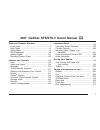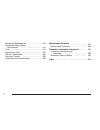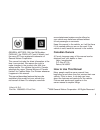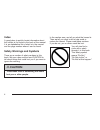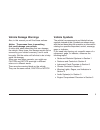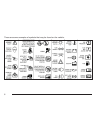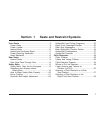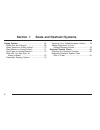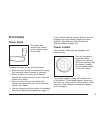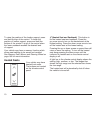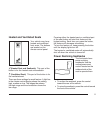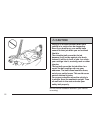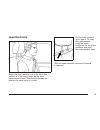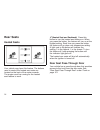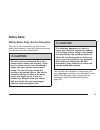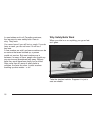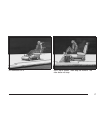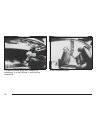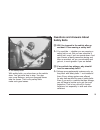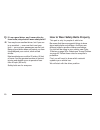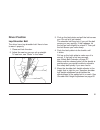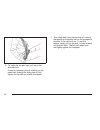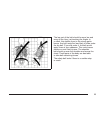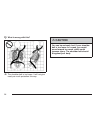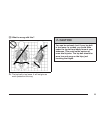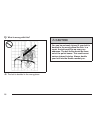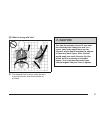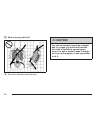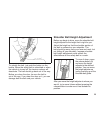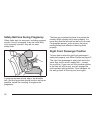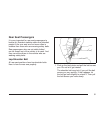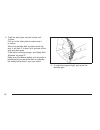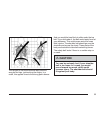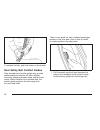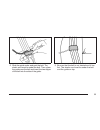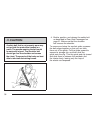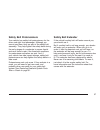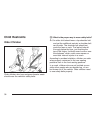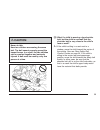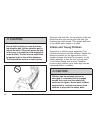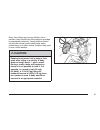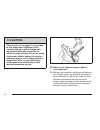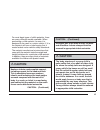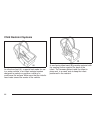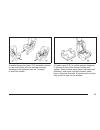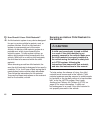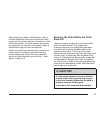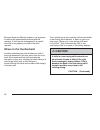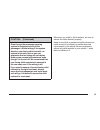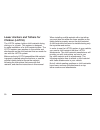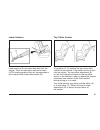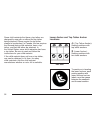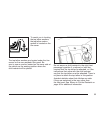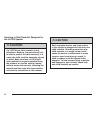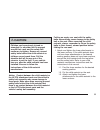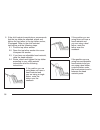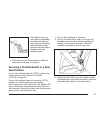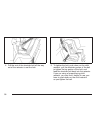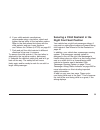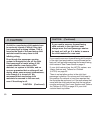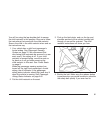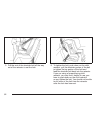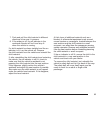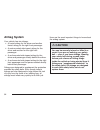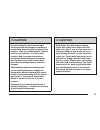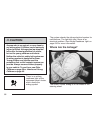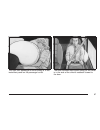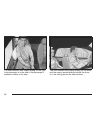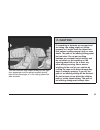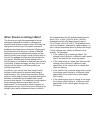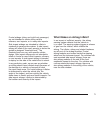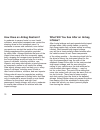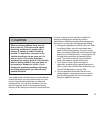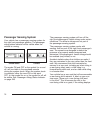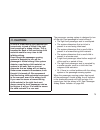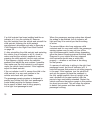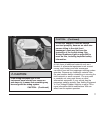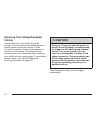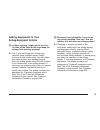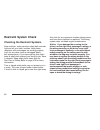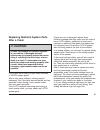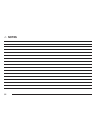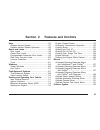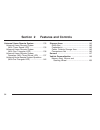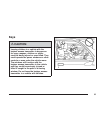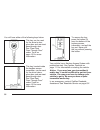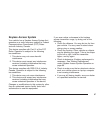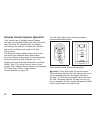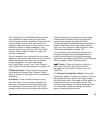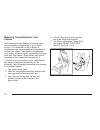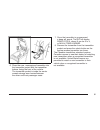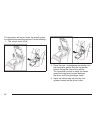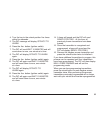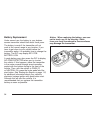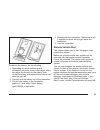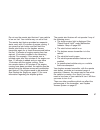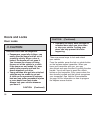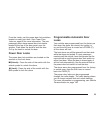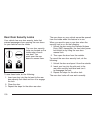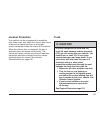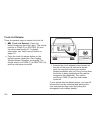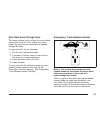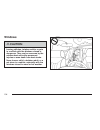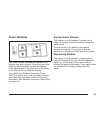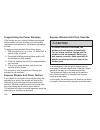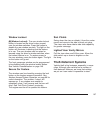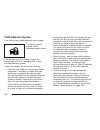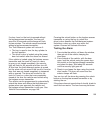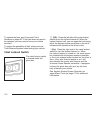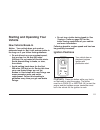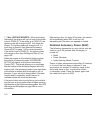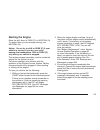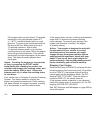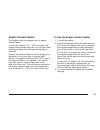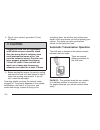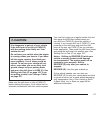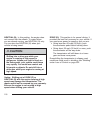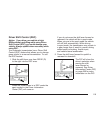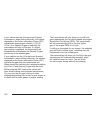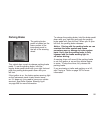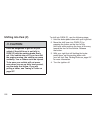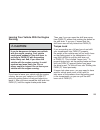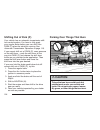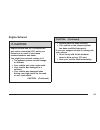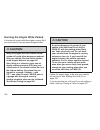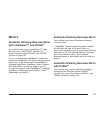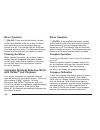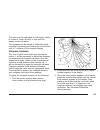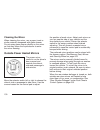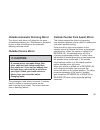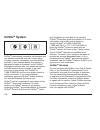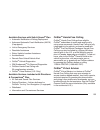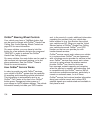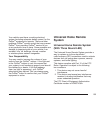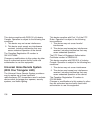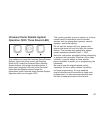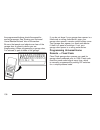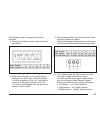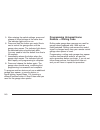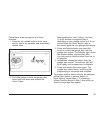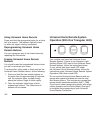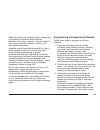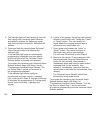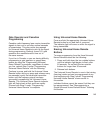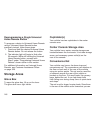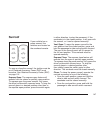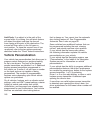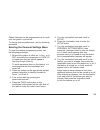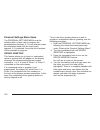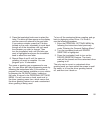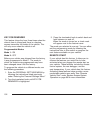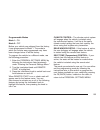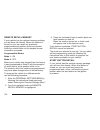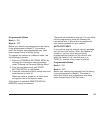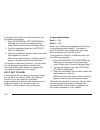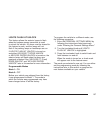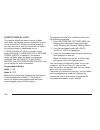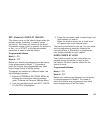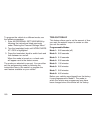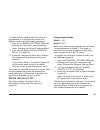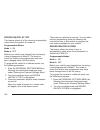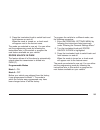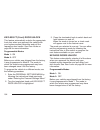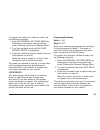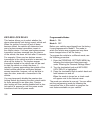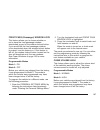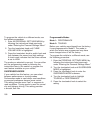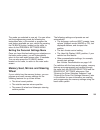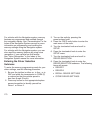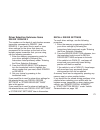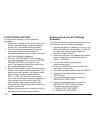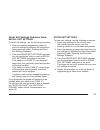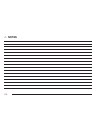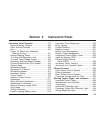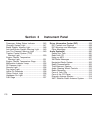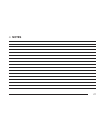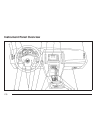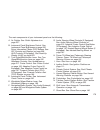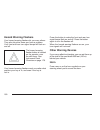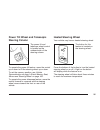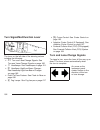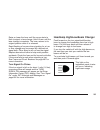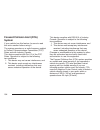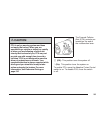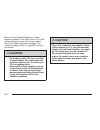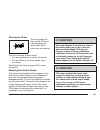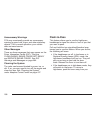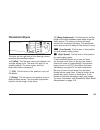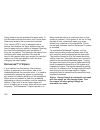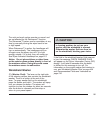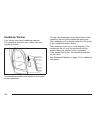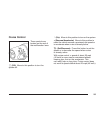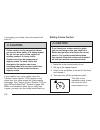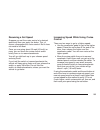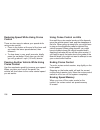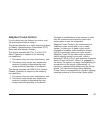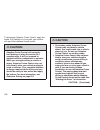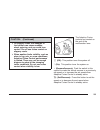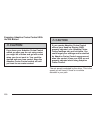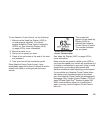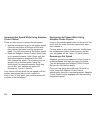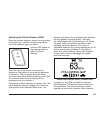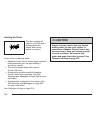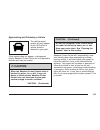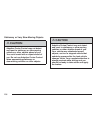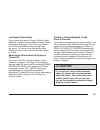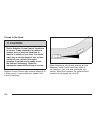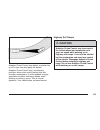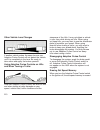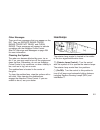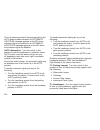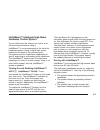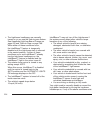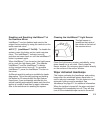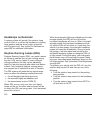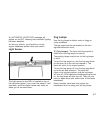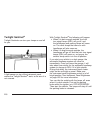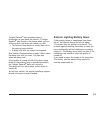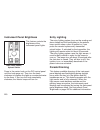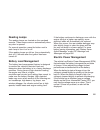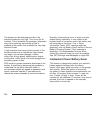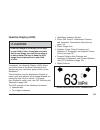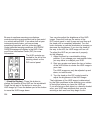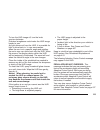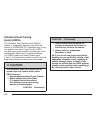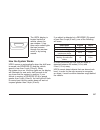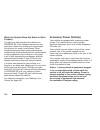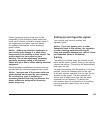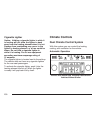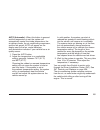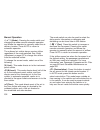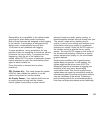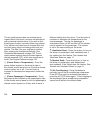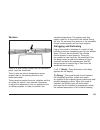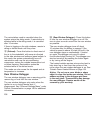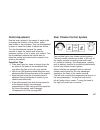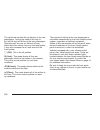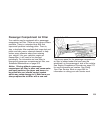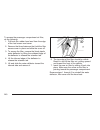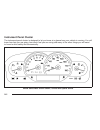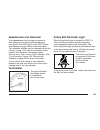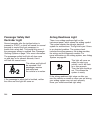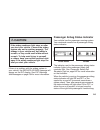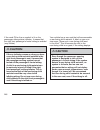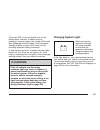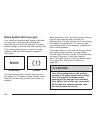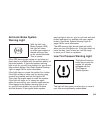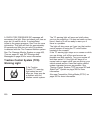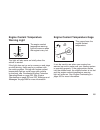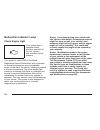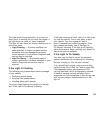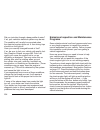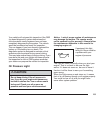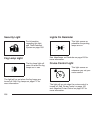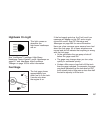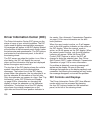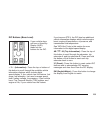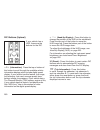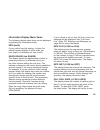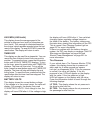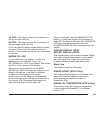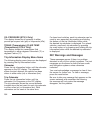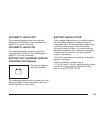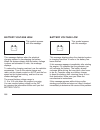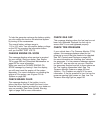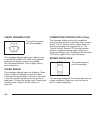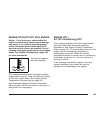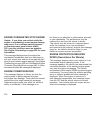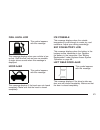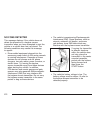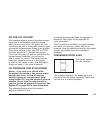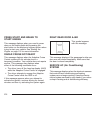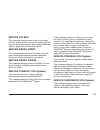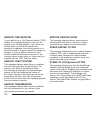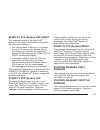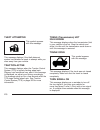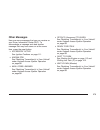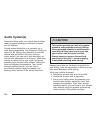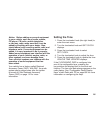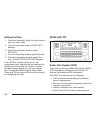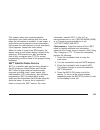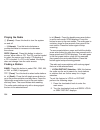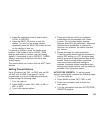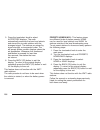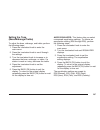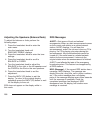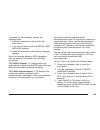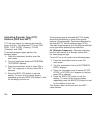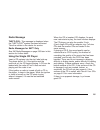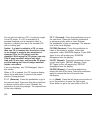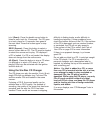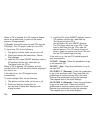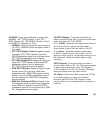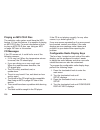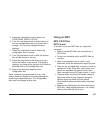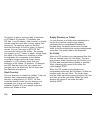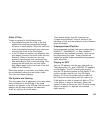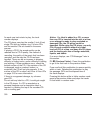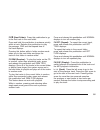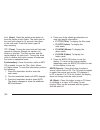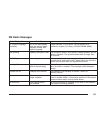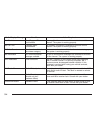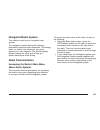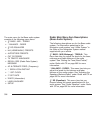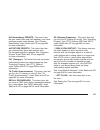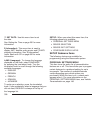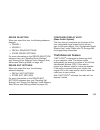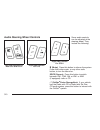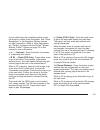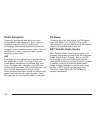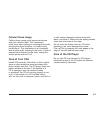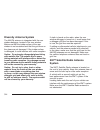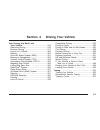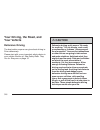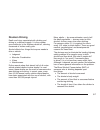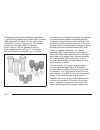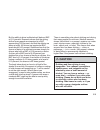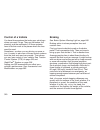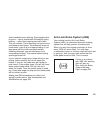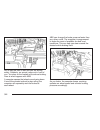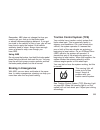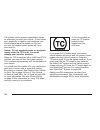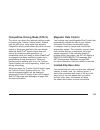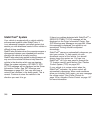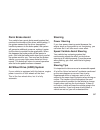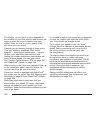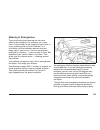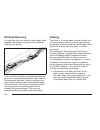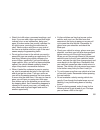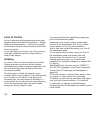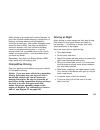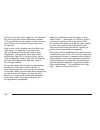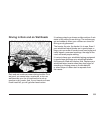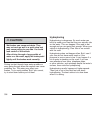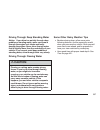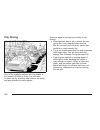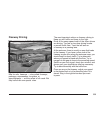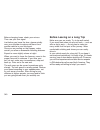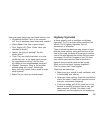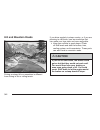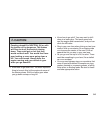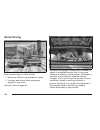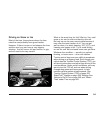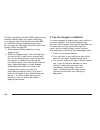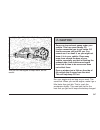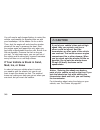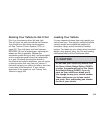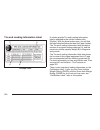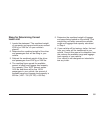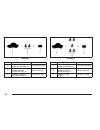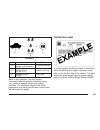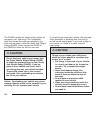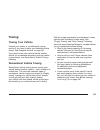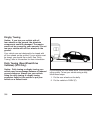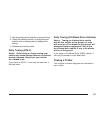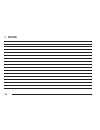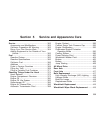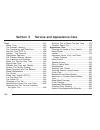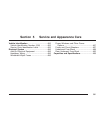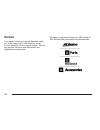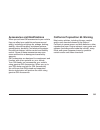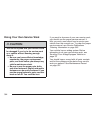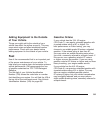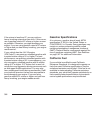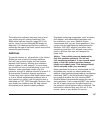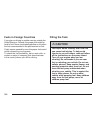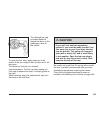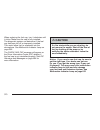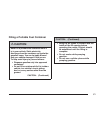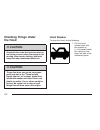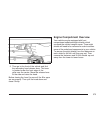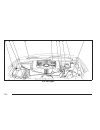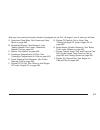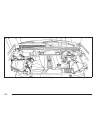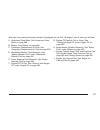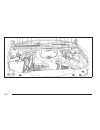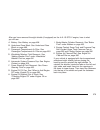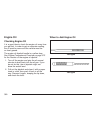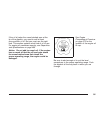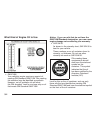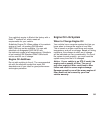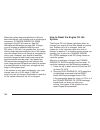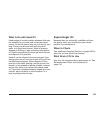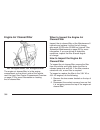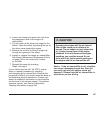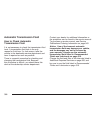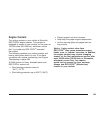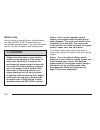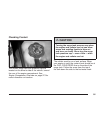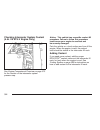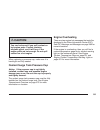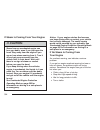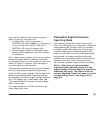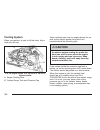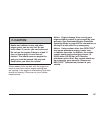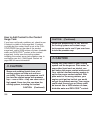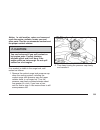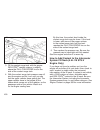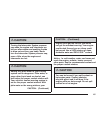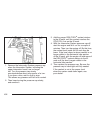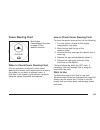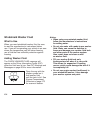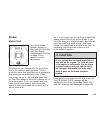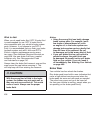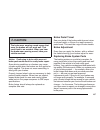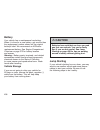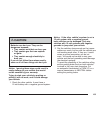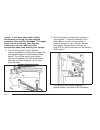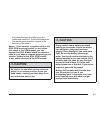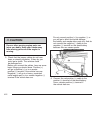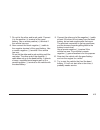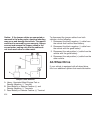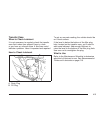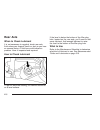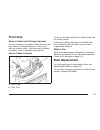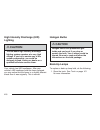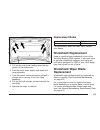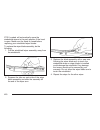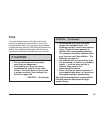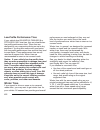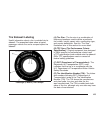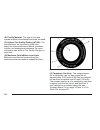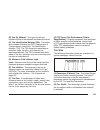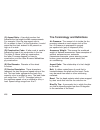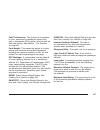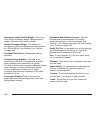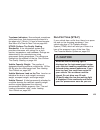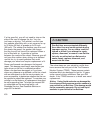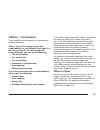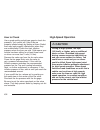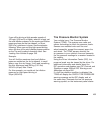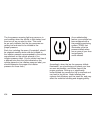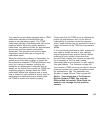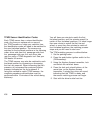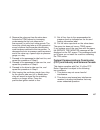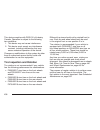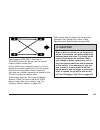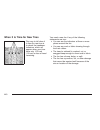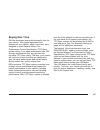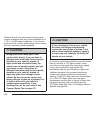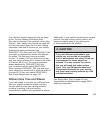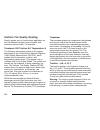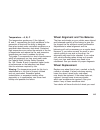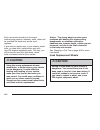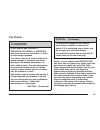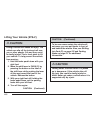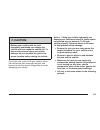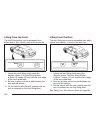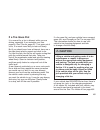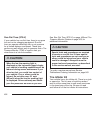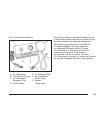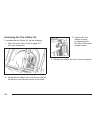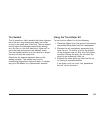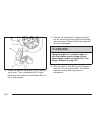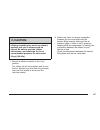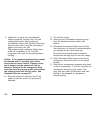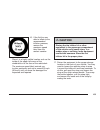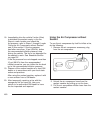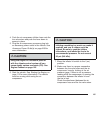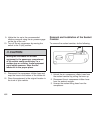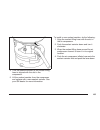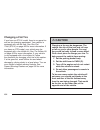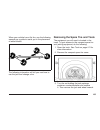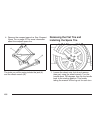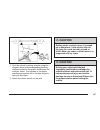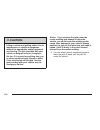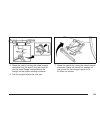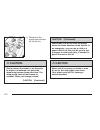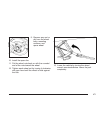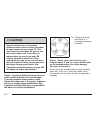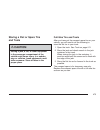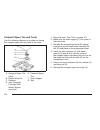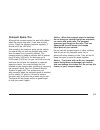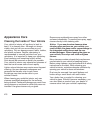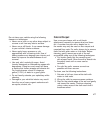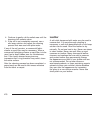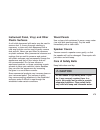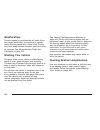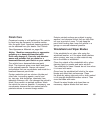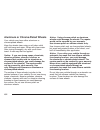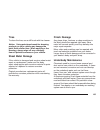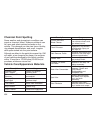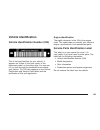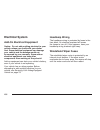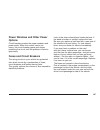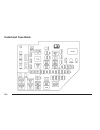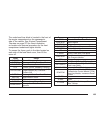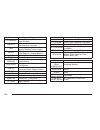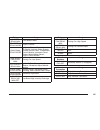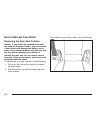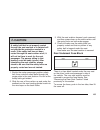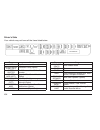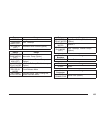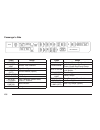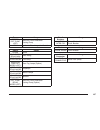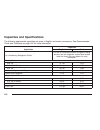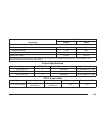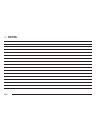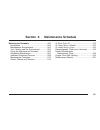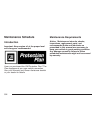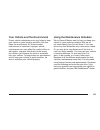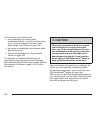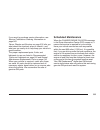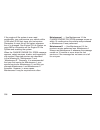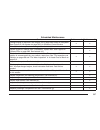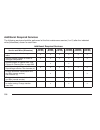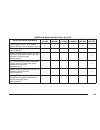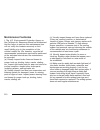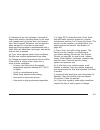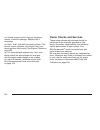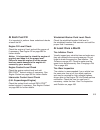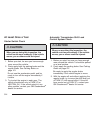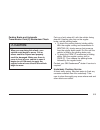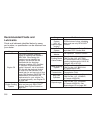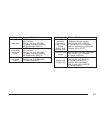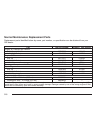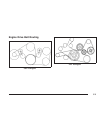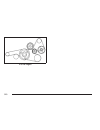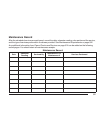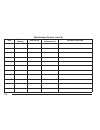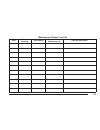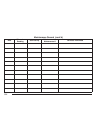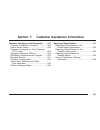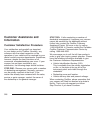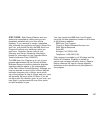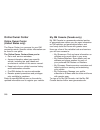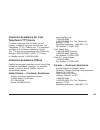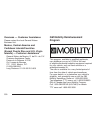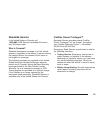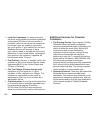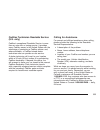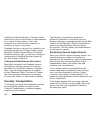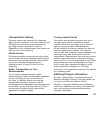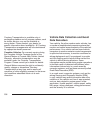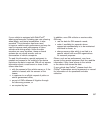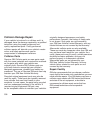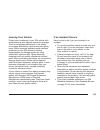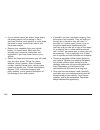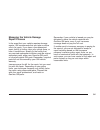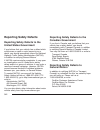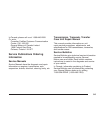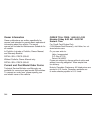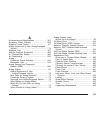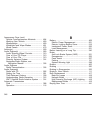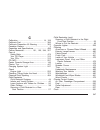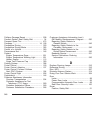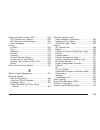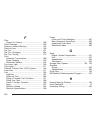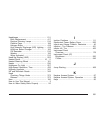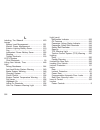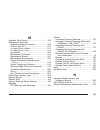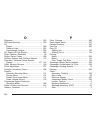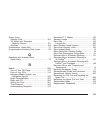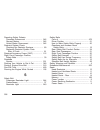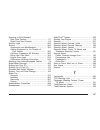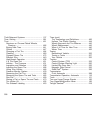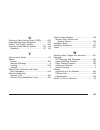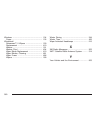- DL manuals
- Cadillac
- Automobile
- 2007 STS
- Owner's Manual
Cadillac 2007 STS Owner's Manual
Seats and Restraint Systems ....................... 7
Front Seats
.............................................. 9
Rear Seats
............................................. 14
Safety Belts
............................................ 15
Child Restraints
...................................... 38
Airbag System
........................................ 64
Restraint System Check
......................... 80
Features and Controls ................................ 83
Keys
....................................................... 85
Doors and Locks
.................................... 98
Windows
............................................... 104
Theft-Deterrent Systems
....................... 107
Starting and Operating Your Vehicle
..... 111
Mirrors
.................................................. 127
OnStar
®
System
................................... 132
Universal Home Remote System
.......... 135
Storage Areas
...................................... 146
Sunroof
................................................ 147
Vehicle Personalization
......................... 148
Instrument Panel ....................................... 175
Instrument Panel Overview
................... 178
Climate Controls
................................... 230
Warning Lights, Gages, and
Indicators
.......................................... 241
Driver Information Center (DIC)
............ 258
Audio System(s)
................................... 280
Driving Your Vehicle ................................. 315
Your Driving, the Road, and
Your Vehicle
..................................... 316
Towing
................................................. 355
Service and Appearance Care .................. 359
Service
................................................. 362
Fuel
...................................................... 365
Checking Things Under the Hood
......... 372
All-Wheel Drive
..................................... 414
Rear Axle
............................................. 416
Front Axle
............................................ 417
Bulb Replacement
................................ 417
2007 Cadillac STS/STS-V Owner Manual
M
1
Summary of 2007 STS
Page 1
Seats and restraint systems ....................... 7 front seats .............................................. 9 rear seats ............................................. 14 safety belts ............................................ 15 child restraints ...................................... 38 airba...
Page 2
Windshield replacement ....................... 419 windshield wiper blade replacement ..................................... 419 tires ..................................................... 421 appearance care .................................. 476 vehicle identification ............................. ...
Page 3: Canadian Owners
General motors, gm, the gm emblem, cadillac, the cadillac crest & wreath, and the name sts are registered trademarks of general motors corporation. This manual includes the latest information at the time it was printed. We reserve the right to make changes in the product after that time without noti...
Page 4: Index
Index a good place to quickly locate information about the vehicle is the index in the back of the manual. It is an alphabetical list of what is in the manual and the page number where it can be found. Safety warnings and symbols there are a number of safety cautions in this book. We use a box and t...
Page 5: Vehicle Damage Warnings
Vehicle damage warnings also, in this manual you will find these notices: notice: these mean there is something that could damage your vehicle. A notice tells about something that can damage the vehicle. Many times, this damage would not be covered by your vehicle’s warranty, and it could be costly....
Page 6
These are some examples of symbols that may be found on the vehicle: 6.
Page 7: Section 1
Front seats ..................................................... 9 power seats ................................................. 9 power lumbar .............................................. 9 heated seats .............................................. 10 heated and ventilated seats ..................
Page 8: Section 1
Airbag system .............................................. 64 where are the airbags? .............................. 66 when should an airbag inflate? .................. 70 what makes an airbag inflate? ................... 71 how does an airbag restrain? ................... 72 what will you see aft...
Page 9: Front Seats
Front seats power seats the power seat controls are located on the outboard side of the seats. To adjust the seat, do any of the following: • move the seat forward or rearward by sliding the horizontal control forward or rearward. • raise or lower the front part of the seat cushion by moving the fro...
Page 10: Heated Seats
To raise the position of the lumbar support, press and hold the top of the control. To lower the position of lumbar support, press and hold the bottom of the control. Let go of the control when the lower seatback reaches the desired level of support. Your vehicle may have a memory function which all...
Page 11: Power Reclining Seatbacks
Heated and ventilated seats your vehicle may have heated and ventilated front seats. The buttons are located on the climate control panel. Z (heated seat and seatback): this part of the button is for the heated seat and seatback. { (ventilated seat): this part of the button is for the ventilated sea...
Page 12: Caution:
{ caution: sitting in a reclined position when your vehicle is in motion can be dangerous. Even if you buckle up, your safety belts cannot do their job when you are reclined like this. The shoulder belt cannot do its job because it will not be against your body. Instead, it will be in front of you. ...
Page 13: Head Restraints
Head restraints adjust the head restraint so that the top of the restraint is at the same height as the top of the occupant’s head. This position reduces the chance of a neck injury in a crash. Pull the head restraint up to raise it. To lower the head restraint, press the button, located on the top ...
Page 14: Rear Seats
Rear seats heated seats your vehicle may have this feature. The buttons used to control the heated rear seats are located on the back of the center console. The engine must be running for the heated seat feature to work. Z (heated seat and seatback): press this button to turn the heated seat feature...
Page 15: Safety Belts
Safety belts safety belts: they are for everyone this part of the manual tells you how to use safety belts properly. It also tells you some things you should not do with safety belts. { caution: do not let anyone ride where he or she cannot wear a safety belt properly. If you are in a crash and you ...
Page 16
In most states and in all canadian provinces, the law says to wear safety belts. Here is why: they work. You never know if you will be in a crash. If you do have a crash, you do not know if it will be a bad one. A few crashes are mild, and some crashes can be so serious that even buckled up, a perso...
Page 17
Put someone on it. Get it up to speed. Then stop the vehicle. The rider does not stop. 17.
Page 18
The person keeps going until stopped by something. In a real vehicle, it could be the windshield... Or the instrument panel... 18.
Page 19: Safety Belts
Or the safety belts! With safety belts, you slow down as the vehicle does. You get more time to stop. You stop over more distance, and your strongest bones take the forces. That is why safety belts make such good sense. Questions and answers about safety belts q: will i be trapped in the vehicle aft...
Page 20
Q: if i am a good driver, and i never drive far from home, why should i wear safety belts? A: you may be an excellent driver, but if you are in an accident — even one that is not your fault — you and your passengers can be hurt. Being a good driver does not protect you from things beyond your contro...
Page 21: Driver Position
Driver position lap-shoulder belt the driver has a lap-shoulder belt. Here is how to wear it properly. 1. Close and lock the door. 2. Adjust the seat so you can sit up straight. To see how, see “seats” in the index. 3. Pick up the latch plate and pull the belt across you. Do not let it get twisted. ...
Page 22
6. To make the lap part tight, pull up on the shoulder belt. It may be necessary to pull stitching on the safety belt through the latch plate to fully tighten the lap belt on smaller occupants. 7. This safety belt has a feature that will reduce the tension of the safety belt on the occupant’s should...
Page 23
The lap part of the belt should be worn low and snug on the hips, just touching the thighs. In a crash, this applies force to the strong pelvic bones. And you would be less likely to slide under the lap belt. If you slid under it, the belt would apply force at your abdomen. This could cause serious ...
Page 24: Caution:
Q: what is wrong with this? A: the shoulder belt is too loose. It will not give nearly as much protection this way. { caution: you can be seriously hurt if your shoulder belt is too loose. In a crash, you would move forward too much, which could increase injury. The shoulder belt should fit against ...
Page 25: Caution:
Q: what is wrong with this? A: the lap belt is too loose. It will not give as much protection this way. { caution: you can be seriously hurt if your lap belt is too loose. In a crash, you could slide under the lap belt and apply force at your abdomen. This could cause serious or even fatal injuries....
Page 26: Caution:
Q: what is wrong with this? A: the belt is buckled in the wrong place. { caution: you can be seriously injured if your belt is buckled in the wrong place like this. In a crash, the belt would go up over your abdomen. The belt forces would be there, not at the pelvic bones. This could cause serious i...
Page 27: Caution:
Q: what is wrong with this? A: the shoulder belt is worn under the arm. It should be worn over the shoulder at all times. { caution: you can be seriously injured if you wear the shoulder belt under your arm. In a crash, your body would move too far forward, which would increase the chance of head an...
Page 28: Caution:
Q: what is wrong with this? A: the belt is twisted across the body. { caution: you can be seriously injured by a twisted belt. In a crash, you would not have the full width of the belt to spread impact forces. If a belt is twisted, make it straight so it can work properly, or ask your dealer to fix ...
Page 29
To unlatch the belt, just push the button on the buckle. When the safety belt is unbuckled or when the vehicle is turned off, the tension reducer will deactivate. The belt should go back out of the way. Before you close the door, be sure the belt is out of the way. If you slam the door on it, you ca...
Page 30
Safety belt use during pregnancy safety belts work for everyone, including pregnant women. Like all occupants, they are more likely to be seriously injured if they do not wear safety belts. A pregnant woman should wear a lap-shoulder belt, and the lap portion should be worn as low as possible, below...
Page 31: Rear Seat Passengers
Rear seat passengers it is very important for rear seat passengers to buckle up! Accident statistics show that unbelted people in the rear seat are hurt more often in crashes than those who are wearing safety belts. Rear passengers who are not safety belted can be thrown out of the vehicle in a cras...
Page 32
2. Push the latch plate into the buckle until it clicks. Pull up on the latch plate to make sure it is secure. When the shoulder belt is pulled out all the way, it will lock. If it does, let it go back all the way and start again. If the belt is not long enough, see safety belt extender on page 37. ...
Page 33: Caution:
The lap part of the belt should be worn low and snug on the hips, just touching the thighs. In a crash, this applies force to the strong pelvic bones. And you would be less likely to slide under the lap belt. If you slid under it, the belt would apply force at your abdomen. This could cause serious ...
Page 34
To unlatch the belt, push the button on the buckle. Rear safety belt comfort guides rear shoulder belt comfort guides may provide added safety belt comfort for older children who have outgrown booster seats and for some adults. When installed on a shoulder belt, the comfort guide positions the belt ...
Page 35
2. Slide the guide under and past the belt. The elastic cord must be under the belt. Then, place the guide over the belt and insert the two edges of the belt into the slots of the guide. 3. Be sure that the belt is not twisted and it lies flat. The elastic cord must be under the belt and the guide o...
Page 36: Caution:
{ caution: a safety belt that is not properly worn may not provide the protection needed in a crash. The person wearing the belt could be seriously injured. The shoulder belt should go over the shoulder and across the chest. These parts of the body are best able to take belt restraining forces. 4. B...
Page 37: Safety Belt Pretensioners
Safety belt pretensioners your vehicle has safety belt pretensioners for the driver and right front passenger. Although you cannot see them, they are part of the safety belt assembly. They help tighten the safety belts during the early stages of a moderate to severe frontal and near frontal crash if...
Page 38: Child Restraints
Child restraints older children older children who have outgrown booster seats should wear the vehicle’s safety belts. Q: what is the proper way to wear safety belts? A: an older child should wear a lap-shoulder belt and get the additional restraint a shoulder belt can provide. The shoulder belt sho...
Page 39: Caution:
{ caution: never do this. Here two children are wearing the same belt. The belt cannot properly spread the impact forces. In a crash, the two children can be crushed together and seriously injured. A belt must be used by only one person at a time. Q: what if a child is wearing a lap-shoulder belt, b...
Page 40: Caution:
{ caution: never do this. Here a child is sitting in a seat that has a lap-shoulder belt, but the shoulder part is behind the child. If the child wears the belt in this way, in a crash the child might slide under the belt. The belt’s force would then be applied right on the child’s abdomen. That cou...
Page 41: Caution:
Every time infants and young children ride in vehicles, they should have the protection provided by appropriate restraints. Young children should not use the vehicle’s adult safety belts alone, unless there is no other choice. Instead, they need to use a child restraint. { caution: people should nev...
Page 42: Caution:
{ caution: children who are up against, or very close to, any airbag when it inflates can be seriously injured or killed. Airbags plus lap-shoulder belts offer protection for adults and older children, but not for young children and infants. Neither the vehicle’s safety belt system nor its airbag sy...
Page 43: Caution:
For most basic types of child restraints, there are many different models available. When purchasing a child restraint, be sure it is designed to be used in a motor vehicle. If it is, the restraint will have a label saying that it meets federal motor vehicle safety standards. The restraint manufactu...
Page 44: Child Restraint Systems
Child restraint systems an infant car bed (a), a special bed made for use in a motor vehicle, is an infant restraint system designed to restrain or position a child on a continuous flat surface. Make sure that the infant’s head rests toward the center of the vehicle. A rear-facing infant seat (b) pr...
Page 45
A forward-facing child seat (c-e) provides restraint for the child’s body with the harness and also sometimes with surfaces such as t-shaped or shelf-like shields. A booster seat (f-g) is a child restraint designed to improve the fit of the vehicle’s safety belt system. Some booster seats have a sho...
Page 46: Caution:
Q: how should i use a child restraint? A: a child restraint system is any device designed for use in a motor vehicle to restrain, seat, or position children. A built-in child restraint system is a permanent part of the motor vehicle. An add-on child restraint system is a portable one, which is purch...
Page 47: Caution:
When securing an add-on child restraint, refer to the instructions that come with the restraint which may be on the restraint itself or in a booklet, or both, and to this manual. The child restraint instructions are important, so if they are not available, obtain a replacement copy from the manufact...
Page 48: Caution:
Because there are different systems, it is important to refer to the instructions that come with the restraint. A child can be endangered in a crash if the child is not properly secured in the child restraint. Where to put the restraint accident statistics show that children are safer if they are re...
Page 49
Caution: (continued) even though the passenger sensing system is designed to turn off the passenger’s frontal airbag if the system detects a rear-facing child restraint, no system is fail-safe, and no one can guarantee that an airbag will not deploy under some unusual circumstance, even though it is...
Page 50: Children (Latch)
Lower anchors and tethers for children (latch) the latch system holds a child restraint during driving or in a crash. This system is designed to make installation of a child restraint easier. The latch system uses anchors in the vehicle and attachments on the child restraint that are made for use wi...
Page 51
Lower anchors lower anchors (a) are metal bars built into the vehicle. There are two lower anchors for each latch seating position that will accommodate a child restraint with lower attachments (b). Top tether anchor a top tether (a, c) anchors the top of the child restraint to the vehicle. A top te...
Page 52
Some child restraints that have a top tether are designed for use with or without the top tether being attached. Others require the top tether always to be attached. In canada, the law requires that forward-facing child restraints have a top tether, and that the tether be attached. In the united sta...
Page 53
To assist you in locating the top tether anchors, the top tether anchor symbol is located on the trim cover. The top tether anchors are located under the trim covers on the rear seatback filler panel. Be sure to use an anchor located on the same side of the vehicle as the seating position where the ...
Page 54: Caution:
Securing a child restraint designed for the latch system { caution: if a latch-type child restraint is not attached to anchors, the restraint will not be able to protect the child correctly. In a crash, the child could be seriously injured or killed. Make sure that a latch-type child restraint is pr...
Page 55: Caution:
{ caution: children can be seriously injured or strangled if a shoulder belt is wrapped around their neck and the safety belt continues to tighten. Secure any unused safety belts behind the child restraint so children cannot reach them. Pull the shoulder belt all the way out of the retractor to set ...
Page 56
2. If the child restraint manufacturer recommends that the top tether be attached, attach and tighten the top tether to the top tether anchor, if equipped. Refer to the child restraint instructions and the following steps: 2.1. Find the top tether anchor. 2.2. Open the top tether anchor trim cover t...
Page 57: Seat Position
If the position you are using has an adjustable head restraint and you are using a single tether, route the tether under the head restraint and in between the head restraint posts. 3. Push and pull the child restraint in different directions to be sure it is secure. Securing a child restraint in a r...
Page 58
4. Pull the rest of the shoulder belt all the way out of the retractor to set the lock. 5. To tighten the belt, push down on the child restraint, pull the shoulder portion of the belt to tighten the lap portion of the belt, and feed the shoulder belt back into the retractor. If you are using a forwa...
Page 59: Right Front Seat Position
6. If your child restraint manufacturer recommends using a top tether, attach and tighten the top tether to the top tether anchor. Refer to the instructions that came with the child restraint and see lower anchors and tethers for children (latch) on page 50. 7. Push and pull the child restraint in d...
Page 60: Caution:
{ caution: a child in a rear-facing child restraint can be seriously injured or killed if the right front passenger’s airbag inflates. This is because the back of the rear-facing child restraint would be very close to the inflating airbag. Even though the passenger sensing system is designed to turn...
Page 61
You will be using the lap-shoulder belt to secure the child restraint in this position. Be sure to follow the instructions that came with the child restraint. Secure the child in the child restraint when and as the instructions say. 1. Your vehicle has a right front passenger’s frontal airbag. See p...
Page 62
5. Pull the rest of the shoulder belt all the way out of the retractor to set the lock. 6. To tighten the belt, push down on the child restraint, pull the shoulder portion of the belt to tighten the lap portion of the belt and feed the shoulder belt back into the retractor. If you are using a forwar...
Page 63
7. Push and pull the child restraint in different directions to be sure it is secure. 8. If the airbag is off, the off indicator in the overhead console will be lit and stay lit when the vehicle is running. If a child restraint has been installed and the on indicator is lit, turn the vehicle off. Re...
Page 64: Airbag System
Airbag system your vehicle has six airbags: • a frontal airbag for the driver and another frontal airbag for the right front passenger. • a seat-mounted side impact airbag for the driver and another for the right front passenger. • a roof-mounted side impact airbag for the driver and passenger direc...
Page 65: Caution:
{ caution: frontal airbags for the driver and right front passenger are designed to deploy in moderate to severe frontal and near frontal crashes. They are not designed to inflate in rollover, rear crashes, or in many side crashes. And, for some unrestrained occupants, frontal airbags may provide le...
Page 66: Caution:
{ caution: anyone who is up against, or very close to, any airbag when it inflates can be seriously injured or killed. Airbags plus lap-shoulder belts offer the best protection for adults, but not for young children and infants. Neither the vehicle’s safety belt system nor its airbag system is desig...
Page 67
The right front passenger’s frontal airbag is in the instrument panel on the passenger’s side. The seat-mounted side impact airbag for the driver is in the side of the driver’s seatback closest to the door. 67.
Page 68
The seat-mounted side impact airbag for the right front passenger is in the side of the passenger’s seatback closest to the door. The roof-mounted side impact airbag for the driver and the person seated directly behind the driver is in the ceiling above the side windows. 68.
Page 69: Caution:
The roof-mounted side impact airbag for the right front passenger and the person seated directly behind that passenger is in the ceiling above the side windows. { caution: if something is between an occupant and an airbag, the airbag might not inflate properly or it might force the object into that ...
Page 70
When should an airbag inflate? The driver’s and right front passenger’s frontal airbags are designed to inflate in moderate to severe frontal or near-frontal crashes. But they are designed to inflate only if the impact exceeds a predetermined deployment threshold. Deployment thresholds take into acc...
Page 71
Frontal airbags (driver and right front passenger) are not intended to inflate during vehicle rollovers, rear impacts, or in many side impacts. Side impact airbags are intended to inflate in moderate to severe side crashes. A side impact airbag will inflate if the crash severity is above the system’...
Page 72: Inflates?
How does an airbag restrain? In moderate to severe frontal or near frontal collisions, even belted occupants can contact the steering wheel or the instrument panel. In moderate to severe side collisions, even belted occupants can contact the inside of the vehicle. Airbags supplement the protection p...
Page 73: Caution:
{ caution: when an airbag inflates, there may be dust in the air. This dust could cause breathing problems for people with a history of asthma or other breathing trouble. To avoid this, everyone in the vehicle should get out as soon as it is safe to do so. If you have breathing problems but cannot g...
Page 74: Passenger Sensing System
Passenger sensing system your vehicle has a passenger sensing system for the right front passenger position. The passenger airbag status indicator will be visible when the vehicle is running. The words on and off or the symbol for on and off, will be visible in the overhead console during the system...
Page 75: Caution:
{ caution: a child in a rear-facing child restraint can be seriously injured or killed if the right front passenger’s airbag inflates. This is because the back of the rear-facing child restraint would be very close to the inflating airbag. Even though the passenger sensing system is designed to turn...
Page 76
If a child restraint has been installed and the on indicator is lit, turn the vehicle off. Remove the child restraint from the vehicle and reinstall the child restraint following the child restraint manufacturer’s directions and refer to securing a child restraint in the right front seat position on...
Page 77: Caution:
{ caution: if the airbag readiness light in the instrument panel cluster ever comes on and stays on, it means that something may be wrong with the airbag system. Caution: (continued) caution: (continued) if this ever happens, have the vehicle serviced promptly, because an adult-size person sitting i...
Page 78: Vehicle
Servicing your airbag-equipped vehicle airbags affect how your vehicle should be serviced. There are parts of the airbag system in several places around your vehicle. You do not want the system to inflate while someone is working on your vehicle. Your dealer and the service manual have information a...
Page 79: Adding Equipment To Your
Adding equipment to your airbag-equipped vehicle q: is there anything i might add to the front or sides of the vehicle that could keep the airbags from working properly? A: yes. If you add things that change your vehicle’s frame, bumper system, height, front end or side sheet metal, they may keep th...
Page 80: Restraint System Check
Restraint system check checking the restraint systems now and then, make sure the safety belt reminder light and all your belts, buckles, latch plates, retractors and anchorages are working properly. Look for any other loose or damaged safety belt system parts. If you see anything that might keep a ...
Page 81: After A Crash
Replacing restraint system parts after a crash { caution: a crash can damage the restraint systems in your vehicle. A damaged restraint system may not properly protect the person using it, resulting in serious injury or even death in a crash. To help make sure your restraint systems are working prop...
Page 82: ✍ Notes
✍ notes 82.
Page 83: Section 2
Keys .............................................................. 85 keyless access system .............................. 87 keyless access system operation .............. 88 doors and locks .......................................... 98 door locks ................................................. ...
Page 84: Section 2
Universal home remote system ................ 135 universal home remote system (with three round led) ....................... 135 universal home remote system (with one triangular led) ..................... 136 universal home remote system operation (with three round led) ....... 137 universal home ...
Page 85: Keys
Keys { caution: leaving children in a vehicle with the keyless access transmitter is dangerous for many reasons, children or others could be badly injured or even killed. They could operate the power windows or other controls or even make the vehicle move. The windows will function with the keyless ...
Page 86
You will have either of the following keys below. This key can be used for the driver’s door, glove box and rear seat pass-through door. See “rear seat pass-through door” under trunk on page 101 for more information. This key, located inside the keyless access transmitter, can be used for the driver...
Page 87: Keyless Access System
Keyless access system your vehicle has a keyless access system that operates on a radio frequency subject to federal communications commission (fcc) rules and with industry canada. This device complies with part 15 of the fcc rules. Operation is subject to the following two conditions: 1. This devic...
Page 88
Keyless access system operation your vehicle has a keyless access system that lets you lock and unlock your vehicle’s doors, open the trunk lid, remotely start the engine, and locate your vehicle, or sound your vehicle’s alarm from a distance as much as 30 feet (10 m) away. The keyless access system...
Page 89
If the engine is off, the windows may be closed from outside the vehicle using the lock button on the keyless access transmitter. Press and hold the lock button for more than two seconds to close any open window(s) on your vehicle. If any window is unable to close completely, it will reverse and the...
Page 90
Matching transmitter(s) to your vehicle each keyless access system is coded to allow only transmitters programmed to your vehicle to work. If a transmitter is lost or stolen, a replacement can be purchased and programmed through your dealer. Your dealer can reprogram your vehicle so lost or stolen t...
Page 91
6. Place the new, unrecognized transmitter into the transmitter pocket with the transmitter buttons facing the front of the vehicle. The transmitter pocket is inside the center console storage area located between the driver and front passenger seats. 7. Once the transmitter is programmed, a beep wi...
Page 92
The procedure will require three, ten minute cycles to complete the matching process. Do the following: 1. The vehicle must be off. 2. Place the new, unrecognized transmitter into the transmitter pocket with the transmitter buttons facing the front of the vehicle. The transmitter pocket is inside th...
Page 93
4. Turn the key to the unlock position five times within five seconds. 5. The dic message will display off/acc to learn. 6. Press the acc. Button (ignition switch). 7. The dic will read wait 10 minutes and will count down to zero, one minute at a time. 8. The dic will display off/acc to learn again....
Page 94
Battery replacement under normal use, the battery in your keyless access transmitter should last about three years. The battery is weak if the transmitter will not work at the normal range in any location. If you have to get close to your vehicle before the transmitter works, it is probably time to ...
Page 95
To replace the battery, do the following: 1. Depending on which keyless access transmitter you have, insert a flat object with a thin edge into the slot on the side or back of the transmitter and separate the bottom half from the top half. 2. Carefully pull the battery out of the transmitter. 3. Put...
Page 96
/ (remote start): to start the vehicle using the remote start feature, do the following: 1. Aim the remote keyless access transmitter at the vehicle. 2. Press the transmitter’s lock button, release it, and then immediately press and hold the transmitter’s remote start button for at least three secon...
Page 97
Do not use the remote start feature if your vehicle is low on fuel. Your vehicle may run out of fuel. The remote start feature provides two separate starts, each with 10 minutes of engine running. If you press the lock button and then hold the remote start button on the keyless access transmitter ag...
Page 98: Doors And Locks
Doors and locks door locks { caution: unlocked doors can be dangerous. • passengers, especially children, can easily open the doors and fall out of a moving vehicle. When a door is locked, the handle will not open it. You increase the chance of being thrown out of the vehicle in a crash if the doors...
Page 99: Power Door Locks
From the inside, use the power door lock switches located on each front door. See power door locks on page 99 for more information. The rear passenger doors have manual door lock knobs located at the top of the door panel near the window. Push down the knob to lock the door. Pull up the knob to unlo...
Page 100: Rear Door Security Locks
Rear door security locks your vehicle has rear door security locks that prevent passengers from opening the rear doors on your vehicle from the inside. The rear door security locks are located on the inside edge of each rear door. You must open the rear doors to access them. To use these locks, do t...
Page 101: Lockout Protection
Lockout protection your vehicle can be programmed to sound the horn three times and unlock the driver’s door when all doors are closed and there is a keyless access transmitter inside the interior of the vehicle. When the driver’s door is reopened, the key in reminder chime will sound continuously. ...
Page 102
Trunk lid release there are several ways to release the trunk lid. • v (trunk lid release): press this button located on the driver’s door. The vehicle must be in park (p) or neutral (n) and the valet mode turned off. To disable valet mode, see valet lockout switch on page 110. • press the trunk lid...
Page 103
Rear seat pass-through door this feature allows you to access the trunk without opening the trunk lid. If the vehicle ever loses power, the trunk can be accessed and opened through this door. To open the door, do the following: 1. Pull the rear seat armrest down. 2. If the door is locked, insert the...
Page 104: Windows
Windows { caution: leaving children, helpless adults, or pets in a vehicle with the windows closed is dangerous. They can be overcome by the extreme heat and suffer permanent injuries or even death from heat stroke. Never leave a child, a helpless adult, or a pet alone in a vehicle, especially with ...
Page 105: Power Windows
Power windows the power window switches are located on the armrest near each window. Press the front of the switch to the first position to open the window to the desired level. Lift up the front of the switch to the first position to close the window. Your vehicle has retained accessory power (rap)...
Page 106: Caution:
Programming the power windows if the battery on your vehicle has been recharged, disconnected, or is not working, you will need to reprogram each window for the express-up feature to work. To program each window, follow these steps: 1. With the ignition on or in acc., or while rap is active, close a...
Page 107: Sun Visors
Window lockout o (window lockout): the rear window lockout button is located on the driver’s door armrest near the window switches. Press this button to disable the rear window controls. The light on the button will illuminate, indicating that the feature is in use. The rear windows can be raised or...
Page 108: Theft-Deterrent System
Theft-deterrent system your vehicle has a theft-deterrent alarm system. The security light is located on the instrument panel cluster. If the ignition is off and a door is open, the security light will flash, reminding you to arm the theft-deterrent system. To arm the system, do one of the following...
Page 109
If a door, hood, or the trunk is opened without the keyless access transmitter, the horn will sound for 30 seconds and the lamps will flash for two minutes. The vehicle cannot be started without a keyless access transmitter. The theft-deterrent system will not arm if: • the key is used to turn the k...
Page 110: Valet Lockout Switch
To replace the fuse, see fuses and circuit breakers on page 487. If the fuse does not need to be replaced, you may need to have your vehicle serviced. To reduce the possibility of theft, always arm the theft-deterrent system when leaving your vehicle. Valet lockout switch the valet lockout switch is...
Page 111: Vehicle
Starting and operating your vehicle new vehicle break-in notice: your vehicle does not need an elaborate break-in. But it will perform better in the long run if you follow these guidelines: • do not drive at any one constant speed, fast or slow, for the first 500 miles (805 km). Do not make full-thr...
Page 112
9 /acc. (off/accessory): when this button is pressed, the engine will turn off even if the shifter is not in park (p). If the shifter is in park (p), the ignition mode will change to rap, if all doors are closed. The ignition mode will change to off, if a front door is opened. See retained accessory...
Page 113: Starting The Engine
Starting the engine move the shift lever to park (p) or neutral (n). To restart when you are already moving, use neutral (n). Notice: do not try to shift to park (p) if your vehicle is moving. If you do, you could damage the transmission. Shift to park (p) only when your vehicle is stopped. The keyl...
Page 114
If the engine does not start after 5-10 seconds, especially in very cold weather (below 0°f or − 18°c), it could be flooded with too much gasoline. Try pushing the accelerator pedal all the way to the floor while cranking for up to 15 seconds maximum. Wait at least 15 seconds between each try, to al...
Page 115: Engine Coolant Heater
Engine coolant heater your vehicle may be equipped with an engine coolant heater. In very cold weather, 0°f ( − 18°c) or colder, the engine coolant heater can help. You will get easier starting and better fuel economy during engine warm-up. Usually, the coolant heater should be plugged in a minimum ...
Page 116: Caution:
4. Plug it into a normal, grounded 110-volt ac outlet. { caution: plugging the cord into an ungrounded outlet could cause an electrical shock. Also, the wrong kind of extension cord could overheat and cause a fire. You could be seriously injured. Plug the cord into a properly grounded three-prong 11...
Page 117: Caution:
{ caution: it is dangerous to get out of your vehicle if the shift lever is not fully in park (p) with the parking brake firmly set. Your vehicle can roll. Do not leave your vehicle when the engine is running unless you have to. If you have left the engine running, the vehicle can move suddenly. You...
Page 118: Caution:
Neutral (n): in this position, the engine does not connect with the wheels. To restart when you are already moving, use neutral (n) only. You can also use neutral (n) when your vehicle is being towed. { caution: shifting into a drive gear while your engine is running at high speed is dangerous. Unle...
Page 119
Driver shift control (dsc) notice: if you drive your vehicle at high rpms without upshifting while using driver shift control (dsc), you could damage your vehicle. Always upshift when necessary while using dsc. Your automatic transmission has a driver shift control (dsc) feature that allows you to c...
Page 120
If your vehicle has the v6 engine and 5-speed transmission, when shifting manually, the number displayed on the driver information center (dic) indicates the highest gear allowed (1,2,3,4,5). If first (1) or second (2) gear is selected, the transmission will stay in that gear. If a higher gear posit...
Page 121: Parking Brake
Parking brake the parking brake pedal is located on the lower portion of the instrument panel to the left of the steering wheel. This vehicle has a push-to-release parking brake pedal. To set the parking brake, hold the regular brake pedal down with your right foot and push the parking brake pedal d...
Page 122: Shifting Into Park (P)
Shifting into park (p) { caution: it can be dangerous to get out of your vehicle if the shift lever is not fully in park (p) with the parking brake firmly set. Your vehicle can roll. If you have left the engine running, the vehicle can move suddenly. You or others could be injured. To be sure your v...
Page 123: Caution:
Leaving your vehicle with the engine running { caution: it can be dangerous to leave your vehicle with the engine running. Your vehicle could move suddenly if the shift lever is not fully in park (p) with the parking brake firmly set. And, if you leave the vehicle with the engine running, it could o...
Page 124: Shifting Out Of Park (P)
Shifting out of park (p) your vehicle has an automatic transmission shift lock control system. You have to fully apply your regular brake before you can shift from park (p) when the vehicle is running. See automatic transmission operation on page 116. If you cannot shift out of park (p), ease pressu...
Page 125: Engine Exhaust
Engine exhaust { caution: engine exhaust can kill. It contains the gas carbon monoxide (co), which you cannot see or smell. It can cause unconsciousness and death. You might have exhaust coming in if: • the exhaust system sounds strange or different. • your vehicle gets rusty underneath. • your vehi...
Page 126: Caution:
Running the engine while parked it is better not to park with the engine running. But if you ever have to, here are some things to know. { caution: idling the engine with the climate control system off could allow dangerous exhaust into your vehicle. See the earlier caution under engine exhaust on p...
Page 127: Mirrors
Mirrors automatic dimming rearview mirror with intellibeam™ and onstar ® your vehicle may have an intellibeam™ inside rearview mirror with onstar ® controls. For more information about onstar ® , see onstar ® system on page 132. To turn on and enable intellibeam™, press and release the intellibeam™ ...
Page 128: With Onstar
Mirror operation o (on/off): press and hold the button, located on the lower left side of the mirror face, for about three seconds to turn the automatic dimming feature on or off. The indicator light will illuminate when this feature is active. The automatic dimming feature is active each time the v...
Page 129
The mirror can be calibrated by driving the vehicle in circles at 5 mph (8 km/h) or less until the display reads a direction. The compass can be placed in calibration mode manually by pressing and holding the on/off button until a c is shown in the compass display. Compass variance the zone is set t...
Page 130
Cleaning the mirror when cleaning the mirror, use a paper towel or similar material dampened with glass cleaner. Do not spray glass cleaner directly on the mirror as that may cause the liquid cleaner to enter the mirror housing. Outside power heated mirrors the power mirror control is on the driver’...
Page 131: Outside Convex Mirror
Outside automatic dimming mirror the driver’s side mirror will adjust for the glare of headlamps behind you. This feature is controlled by the on and off settings on the automatic dimming rearview mirror. Outside convex mirror { caution: a convex mirror can make things (like other vehicles) look far...
Page 132: Onstar
Onstar ® system onstar ® uses several innovative technologies and live advisors to provide you with a wide range of safety, security, information, and convenience services. If your airbags deploy, the system is designed to make an automatic call to onstar ® emergency advisors who can request emergen...
Page 133
Available services with safe & sound ® plan • automatic notification of airbag deployment • advanced automatic crash notification (aacn) (if equipped) • link to emergency services • roadside assistance • stolen vehicle location assistance • accidentassist • remote door unlock/vehicle alert • onstar ...
Page 134
Onstar ® steering wheel controls your vehicle may have a talk/mute button that can be used to interact with onstar ® hands-free calling. See audio steering wheel controls on page 310 for more information. On some vehicles, you may have to hold the button for a few seconds and give the command “onsta...
Page 135: Universal Home Remote
Your vehicle must have a working electrical system (including adequate battery power) for the onstar ® equipment to operate. There are other problems onstar ® cannot control that may prevent onstar ® from providing onstar ® service to you at any particular time or place. Some examples are damage to ...
Page 136: (With One Triangular Led)
This device complies with rss-210 of industry canada. Operation is subject to the following two conditions: 1. This device may not cause interference. 2. This device must accept any interference received, including interference that may cause undesired operation of the device. The canadian registrat...
Page 137
Universal home remote system operation (with three round led) your vehicle may have the universal home remote system. If there are three round light emitting diode (led) under the universal home remote system buttons, follow the instructions below. If there is one triangular led next to the universa...
Page 138
The programmed buttons should be erased for security purposes. See “erasing your universal home remote buttons” later in this section. Be sure that people and objects are clear of the garage door or security device you are programming. When programming a garage door, it is advised to park outside of...
Page 139
Follow these steps to program up to three channels: 1. Remove the battery cover of the hand-held transmitter. 2. Write down the eight to 12 coding switch settings from left to right. When the switch is in the up position, write “on,” and when a switch is in the down position, write “off”. If a switc...
Page 140
5. After entering the switch settings, press and release all three buttons at the same time. The indicator lights will turn on. 6. Press and hold the button you would like to use to control the garage door until the garage door moves. The indicator light above the selected button should slowly blink...
Page 141
Follow these steps to program up to three channels: 1. Press the two outside buttons at the same time for one to two seconds, and immediately release them. 2. Go to the garage. Locate the garage door motor head and press and release the “learn” button. After pressing the “learn” button, you have 10 ...
Page 142
Using universal home remote press and hold the appropriate button for at least half of a second. The indicator light will come on while the signal is being transmitted. Reprogramming universal home remote buttons you can reprogram any of the three buttons by repeating the instructions. Erasing unive...
Page 143
Read the instructions completely before attempting to program the universal home remote. Because of the steps involved, it may be helpful to have another person available to assist you in the programming steps. Keep the original hand-held transmitter for use in other vehicles as well as for future u...
Page 144
4. The indicator light will flash slowly at first and then rapidly after universal home remote successfully receives the frequency signal from the hand-held transmitter. Release both buttons. 5. Press and hold the newly-trained universal home remote button and observe the indicator light. If the ind...
Page 145
Gate operator and canadian programming canadian radio-frequency laws require transmitter signals to time out or quit after several seconds of transmission. This may not be long enough for universal home remote to pick up the signal during programming. Similarly, some u.S. Gate operators are manufact...
Page 146: Storage Areas
Reprogramming a single universal home remote button to program a device to universal home remote using a universal home remote button previously trained, follow these steps: 1. Press and hold the desired universal home remote button. Do not release the button. 2. The indicator light will begin to fl...
Page 147: Sunroof
Sunroof if your vehicle has a power sunroof, the switches are located on the overhead console. To open or close the sunroof, the ignition must be on or retained accessory power (rap) must be active. See retained accessory power (rap) on page 112. Express open: the express open feature will operate f...
Page 148: Vehicle Personalization
Anti-pinch: if an object is in the path of the sunroof while it is closing, the anti-pinch feature will detect the object and stop the sunroof from closing at the point of the obstruction. The sunroof will then return to the full-open or vent position. To close the sunroof once it has re-opened, ref...
Page 149
Certain features can be programmed not to recall until the ignition is turned off. To change feature preferences, use the following procedure. Entering the personal settings menu to enter the feature programming mode, use the following procedure: 1. Be sure the ignition is either on, in acc., or in ...
Page 150
Personal settings menu items the personal settings menu must be selected with a check mark to program the personalization features. If it is not selected, press the tune/select knob until the check mark appears. If it is selected, the entire list of features will be available to program. Driver gree...
Page 151
5. Press the tune/select knob once to select the letter. The letter will then appear on the display and the cursor will advance to the next letter. If you make a mistake, press the f5 button, located on the radio, repeatedly to cycle back through all of the characters until you reach the character y...
Page 152
Key fob reminder this feature chirps the horn three times when the driver’s door is closed and there is a keyless access transmitter left inside of the vehicle. This will only occur when the vehicle is off. Programmable modes mode 1: on mode 2: off before your vehicle was shipped from the factory, i...
Page 153
Programmable modes mode 1: on mode 2: off before your vehicle was shipped from the factory, it was programmed to mode 1. The mode to which the vehicle was programmed may have been changed since it left the factory. To program the vehicle to a different mode, use the following procedure: 1. Enter the...
Page 154
Remote recall memory if your vehicle has the optional memory package, you will have this feature. When this feature is turned on, you can recall any previously programmed seat position and mirror position when the unlock button on the keyless access transmitter is pressed. Programmable modes mode 1:...
Page 155
Programmable modes mode 1: on mode 2: off before your vehicle was shipped from the factory, it was programmed to mode 2. The mode to which the vehicle was programmed may have been changed since it left the factory. To program the vehicle to a different mode, use the following procedure: 1. Enter the...
Page 156
To program the vehicle to a different mode, use the following procedure: 1. Enter the personal settings menu by following the instructions listed previously under “entering the personal settings menu.” 2. Turn the tune/select knob until auto exit seat is highlighted. 3. Press the tune/select knob to...
Page 157
Lights flash at unlock this feature allows the exterior lamps to flash when the keyless access transmitter is used to unlock the vehicle. All doors must be closed for this feature to work, and the lamps will not flash if the parking lamps or headlamps are on. If lights flash at unlock is turned on a...
Page 158
Lights flash at lock this feature allows the exterior lamps to flash once when the keyless access transmitter is used to lock the vehicle. All doors must be closed for this feature to work, and the lamps will not flash if the parking lamps or headlamps are on. If lights flash at lock is turned on an...
Page 159
Ext. (exterior) lights at unlock this feature turns on the exterior lamps when the keyless access transmitter is used to unlock the vehicle. The lamps will remain on for about 20 seconds unless a door is opened, the ignition is in acc., on, or start, or the keyless access transmitter is used to lock...
Page 160
To program the vehicle to a different mode, use the following procedure: 1. Enter the personal settings menu by following the instructions listed previously under “entering the personal settings menu.” 2. Turn the tune/select knob until horn chirps at lock is highlighted. 3. Press the tune/select kn...
Page 161
To determine the mode to which the vehicle is programmed or to program the vehicle to a different mode, use the following procedure: 1. Enter the personal settings menu by following the instructions listed previously under “entering the personal settings menu.” 2. Turn the tune/select knob until twi...
Page 162
Doors unlock at off this feature allows all of the doors to automatically unlock when the ignition is turned off. Programmable modes mode 1: on mode 2: off before your vehicle was shipped from the factory, it was programmed to mode 2. The mode to which the vehicle was programmed may have been change...
Page 163
3. Press the tune/select knob to switch back and forth between on and off. When the mode is turned on, a check mark will appear next to the feature name. The mode you selected is now set. You can either exit the programming mode by following the instructions later in this section or program the next...
Page 164
Keyless ft (front) door unlock this feature automatically unlocks the appropriate front door when you approach the vehicle with your keyless access transmitter and pull the respective door handle. See door locks on page 98 for more information. Programmable modes mode 1: on mode 2: off before your v...
Page 165
To program the vehicle to a different mode, use the following procedure: 1. Enter the personal settings menu by following the instructions listed previously under “entering the personal settings menu.” 2. Turn the tune/select knob until keyless doors unlock is highlighted. 3. Press the tune/select k...
Page 166
Keyless lock delay this feature allows you to select whether the doors automatically lock during normal vehicle exit. When the ignition is turned off and all doors become closed, the vehicle will determine how many keyless access transmitters remain in the vehicle interior. If at least one keyless a...
Page 167
Front pass (passenger) window lock this feature allows you to choose whether or not to have the front passenger window deactivated as part of the window lockout button. If you would like the front passenger window to be deactivated when the window lockout button is pushed, turn this feature on. If t...
Page 168
To program the vehicle to a different mode, use the following procedure: 1. Enter the personal settings menu by following the instructions listed previously under “entering the personal settings menu.” 2. Turn the tune/select knob until chime volume high is highlighted. 3. Press the tune/select knob...
Page 169: Wheel
The mode you selected is now set. You can either exit the programming mode by following the instructions later in this section or program the next feature available on your vehicle by pressing the f6 (back) button, located on the radio, to return to the personal settings menu. Exiting the personal s...
Page 170
For vehicles with the navigation system, memory features are programmed and recalled through the navigation display. See “personalization” in the index of the navigation system manual for more information on programming and recalling the memory settings using the navigation system. For vehicles with...
Page 171
Driver selection submenu items driver 1/driver 2 the numbers on the back of each keyless access transmitter correspond to driver 1 and driver 2. If you would like to recall or store driver settings for the driver that does not correspond to the number on the back of the keyless access transmitter th...
Page 172
Store driver settings to store driver settings, use the following procedure: 1. Adjust your settings for the driver’s seat, the outside rearview mirrors, and the steering column to a comfortable driving position. 2. Enter the memory programming mode for your driver settings by following the instruct...
Page 173
Driver exit settings submenu items recall exit settings to recall exit settings, use the following procedure: 1. Enter the memory programming mode for your exit settings by following the instructions listed previously under “entering the driver exit settings submenu.” 2. From the driver exit setting...
Page 174: ✍ Notes
✍ notes 174.
Page 175: Section 3
Instrument panel overview ........................ 178 hazard warning flashers .......................... 180 other warning devices ............................. 180 horn .......................................................... 180 power tilt wheel and telescopic steering column .....................
Page 176: Section 3
Passenger airbag status indicator ............. 245 charging system light .............................. 247 brake system warning light ..................... 248 anti-lock brake system warning light ...... 249 low tire pressure warning light .............. 249 traction control system (tcs) warning l...
Page 177: ✍ Notes
✍ notes 177.
Page 178: Instrument Panel Overview
Instrument panel overview 178.
Page 179
The main components of your instrument panel are the following: a. Air outlets. See outlet adjustment on page 237. B. Instrument panel brightness control. See instrument panel brightness on page 220. Driver information center (dic) buttons. See dic controls and displays on page 258. Hud controls (if...
Page 180: Hazard Warning Flashers
Hazard warning flashers your hazard warning flashers let you warn others. They also let police know you have a problem. Your front and rear turn signal lamps will flash on and off. The hazard warning flasher button is located on the console, near the shift lever. See instrument panel overview on pag...
Page 181: Steering Column
Power tilt wheel and telescopic steering column the power tilt and telescope wheel control is located on the outboard side of the steering column. To operate the power tilt feature, move the control up or down to tilt the steering wheel up or down. To set the memory position, see vehicle personaliza...
Page 182
Turn signal/multifunction lever the lever on the left side of the steering column includes the following: • g turn and lane-change signals. See turn and lane-change signals on page 182. • o headlamps. See headlamps on page 211. • 3 headlamp high/low-beam changer. See headlamp high/low-beam changer o...
Page 183
Raise or lower the lever until the arrow starts to flash to signal a lane change. Hold it there until the lane change is complete. The lever returns to its original position when it is released. Rapid flashing of arrows when signaling for a turn or lane change may be caused by a burned-out signal bu...
Page 184: System
Forward collision alert (fca) system if your vehicle has this feature, be sure to read this entire section before using it. The system operates on a radio frequency subject to federal communications commission (fcc) rules and with industry canada. This device complies with part 15 of the fcc rules. ...
Page 185: Caution:
{ caution: fca is only a warning system and does not apply the brakes. When you are approaching a vehicle or object too rapidly or when you are following a vehicle too closely that is ahead of you, fca may not provide you with enough time to avoid a collision. Fca is not designed to warn the driver ...
Page 186: Caution:
Make sure the head-up display is on and properly adjusted. If the hud is not on, fca will not be enabled and you will not be provided with fca audible and visual warnings. See head-up display (hud) on page 223 for more information. { caution: • on winding roads, fca may not detect a vehicle ahead. Y...
Page 187: Caution:
Warning the driver the alert symbol will flash on the hud and a warning beep will sound when driver action may be required. The driver warning is active when: • you are approaching a vehicle too quickly. • you are following a vehicle ahead much too closely. See defensive driving on page 316 for more...
Page 188: Flash-to-Pass
Unnecessary warnings fca may occasionally provide an unnecessary warning to guard rails, signs, and other stationary objects. This is normal operation, your vehicle does not need service. Other messages there are three messages that may appear on the driver information center (dic). They are clean r...
Page 189: Windshield Wipers
Windshield wipers the lever on the right side of the steering column operates the windshield wipers. 7 (mist): pull the lever down and release it for a single wiping cycle. The lever will return to its original position. For more cycles, hold the lever down before releasing it. 9 (off): put the leve...
Page 190: Rainsense™ Ii Wipers
Heavy snow or ice can overload the wiper motor. A circuit breaker will stop the motor until it cools down. Clear away snow or ice to prevent an overload. Your vehicle (sts-v only) is equipped with a feature that disables the wiper system when the hood is open and your vehicle is stopped. Opening the...
Page 191: Windshield Washer
The mist and wash cycles operate as normal and are not affected by the rainsense™ function. The rainsense™ system can be overridden at any time by manually turning the wiper band to low or high speed. When rainsense™ is active, the headlamps will turn on automatically. The headlamps will turn off ag...
Page 192: Headlamp Washer
Headlamp washer your vehicle may have headlamp washers. The headlamp washers clear debris from the headlamp lenses. The headlamp washers are located to the inside of the headlamps. To wash the headlamps, press the washer button located at the end of the windshield wiper lever. The headlamps will be ...
Page 193: Cruise Control
Cruise control these controls are located on the end of the multifunction lever. 9 (off): move to this position to turn the system off. R (on): move to this position to turn on the system. + (resume/accelerate): move to this position to make the vehicle resume a previously set speed or to accelerate...
Page 194: Caution:
If you apply your brakes, the cruise control will shut off. { caution: cruise control can be dangerous where you cannot drive safely at a steady speed. So, do not use your cruise control on winding roads or in heavy traffic. Cruise control can be dangerous on slippery roads. On such roads, fast chan...
Page 195
Resuming a set speed suppose you set the cruise control at a desired speed and then you apply the brake. This, of course, disengages the cruise control. But it does not need to be reset. Once you are going about 25 mph (40 km/h) or more, you can move the cruise control switch briefly from on to resu...
Page 196
Reducing speed while using cruise control there are two ways to reduce your speed while using cruise control: • press in the button at the end of the lever until you reach the lower speed desired, then release it. • to slow down in very small amounts, briefly press the set button. Each time you do t...
Page 197: Adaptive Cruise Control
Adaptive cruise control if your vehicle has this feature, be sure to read this entire section before using it. The system operates on a radio frequency subject to federal communications commission (fcc) rules and with industry canada. This device complies with part 15 of the fcc rules. Operation is ...
Page 198: Caution:
To disengage adaptive cruise control, apply the brake. If no vehicle is in your path, your vehicle will react like traditional cruise control. { caution: adaptive cruise control will not apply hard braking or bring the vehicle to a complete stop. It will not respond to stopped vehicles, pedestrians ...
Page 199
Caution: (continued) • on slippery roads, fast changes in tire traction can cause needless wheel spinning, and you could lose control. Do not use cruise control on slippery roads. • when weather limits visibility, such as when in fog, rain, or snow conditions, adaptive cruise control performance is ...
Page 200: Caution:
Engaging adaptive cruise control with the set button { caution: if you leave your adaptive cruise control switch on when you are not using cruise, you might hit a button and go into cruise when you do not want to. You could be startled and even lose control. Keep the adaptive cruise control switch o...
Page 201
To set adaptive cruise control, do the following: 1. Make sure the head-up display (hud) is on and properly adjusted. You cannot engage adaptive cruise control unless the hud is on. See head-up display (hud) on page 223 for more information. 2. Move the switch to on. 3. Get up to the speed you want....
Page 202
Increasing set speed while using adaptive cruise control there are two ways to increase the set speed: • use the accelerator to get to the higher speed. Press the set button at the end of the lever, then release the button and the accelerator pedal. You will now cruise at the higher speed. • move th...
Page 203
Selecting the follow distance (gap) when the system detects a slower moving vehicle, it will adjust your vehicle’s speed and maintain the follow distance (gap) you select. Use the gap button on the steering wheel to adjust the follow distance. Press the top of the button to increase the distance or ...
Page 204: Caution:
Alerting the driver the alert symbol will flash on the hud and a warning beep will sound when driver action is required. Driver action is required when: • adaptive cruise control cannot apply sufficient braking because you are approaching a vehicle too rapidly. • the vehicle speed drops below about ...
Page 205: Caution:
Approaching and following a vehicle the vehicle ahead symbol will only appear on the hud when a vehicle ahead is detected in your path. If this symbol does not appear, or disappears briefly, adaptive cruise control will not respond to vehicles you may see ahead. { caution: when the adaptive cruise c...
Page 206: Caution:
Stationary or very slow-moving objects { caution: adaptive cruise control may not detect and react to stationary or slow-moving vehicles or other objects ahead of you. You could crash into an object ahead of you. Do not use adaptive cruise control when approaching stationary or slow-moving vehicles ...
Page 207: Caution:
Low-speed deactivation if your speed falls below 20 mph (32 km/h) while following a vehicle ahead, adaptive cruise control will begin to disengage. The driver alert symbol on the hud will flash and the warning beep will sound. The driver must take action since adaptive cruise control will not slow t...
Page 208: Caution:
Curves in the road { caution: due to adaptive cruise control limitations in curves, it may respond to a vehicle in another lane, or may not have time to react to a vehicle in your lane. You could crash into a vehicle ahead of you, or lose control of your vehicle. Give extra attention in curves and b...
Page 209: Caution:
Adaptive cruise control may detect a vehicle that is not in your lane and apply the brakes. Adaptive cruise control may, occasionally, provide a driver alert and/or braking that you consider unnecessary. It could respond to signs, guardrails and other stationary objects when entering or exiting a cu...
Page 210
Other vehicle lane changes if another vehicle enters the same lane as you, adaptive cruise control will not detect the vehicle until it is completely in the lane. Be ready to take action and apply the brakes yourself. Using adaptive cruise controls on hills and when towing a trailer how well adaptiv...
Page 211: Headlamps
Other messages there are three messages that may appear on the dic. They are service radar cruise, radar cruise not ready and clean radar. These messages will appear to indicate a problem with the adaptive cruise control. See dic warnings and messages on page 264 for more information. Cleaning the s...
Page 212
This is a momentary switch that springs back to the auto position when released. An automatic lights on message appears on the dic when automatic lights are enabled or an automatic lights off message appears on the dic when the automatic lights are disabled. Auto (automatic): turn the control to thi...
Page 213
Intellibeam™ intelligent high-beam headlamp control system if your vehicle has this feature, be sure to read this entire section before using it. Intellibeam™ is an enhancement to the vehicle’s headlamp system. Using a digital light sensor located on the back of the rearview mirror, this system turn...
Page 214
• the high-beam headlamps are manually turned on or you use the flash-to-pass feature. See headlamp high/low-beam changer on page 183 and flash-to-pass on page 188. When either of these conditions occur, the intellibeam™ feature is temporarily disabled until the high-beam stalk is returned to the ne...
Page 215: Wiper Activated Headlamps
Disabling and resetting intellibeam™ at the rearview mirror intellibeam™ can be disabled and reset to the original factory setting by using the controls on the inside rearview mirror. Auto 3 (intellibeam™ on/off): to disable the system, press this button on the inside rearview mirror. The intellibea...
Page 216: Headlamps On Reminder
Headlamps on reminder a warning chime will sound if the exterior lamp control is left on in either the headlamp or parking lamp position and the driver’s door is opened with the ignition off. See lights on reminder on page 256 for additional information. Daytime running lamps (drl) daytime running l...
Page 217: Fog Lamps
An automatic lights off message will appear on the dic, showing that automatic lighting has been disabled. As with any vehicle, you should turn on the regular headlamp system when you need it. Light sensor the light sensor for the drl is located on top of the instrument panel. If you cover the senso...
Page 218: Twilight Sentinel
Twilight sentinel ® twilight sentinel ® can turn your lamps on and off for you. A light sensor on top of the instrument panel makes the twilight sentinel ® work, so be sure it is not covered. With twilight sentinel ® the following will happen: • when it is dark enough outside, the front turn signal ...
Page 219
Twilight sentinel ® also provides exterior illumination as you leave the vehicle. If twilight sentinel ® has turned on the lamps when you turn off the ignition, the lamps will remain on until: • the exterior lamp switch is moved from off to the parking lamp position. • a delay time that you select h...
Page 220: Entry Lighting
Instrument panel brightness this feature controls the brightness of the instrument panel lights. Press in the center knob on the dic control panel until the knob pops out. Then turn the knob clockwise to brighten the lights or counterclockwise to dim them. If you turn the knob completely clockwise, ...
Page 221: Reading Lamps
Reading lamps the reading lamps are located on the overhead console. These lamps come on automatically when any door is opened. For manual operation, press the button next to each lamp to turn it on or off. If the reading lamps are left on, they automatically shut off 10 minutes after the ignition h...
Page 222
The battery can be discharged at idle if the electrical loads are very high. This is true for all vehicles. This is because the generator (alternator) may not be spinning fast enough at idle to produce all the power that is needed for very high electrical loads. A high electrical load occurs when se...
Page 223: Head-Up Display (Hud)
Head-up display (hud) { caution: if the hud image is too bright, or too high in your field of view, it may take you more time to see things you need to see when it is dark outside. Be sure to keep the hud image dim and placed low in your field of view. If equipped, the head-up display (hud) allows y...
Page 224
Be sure to continue scanning your displays, controls and driving environment just as you would in a vehicle without hud. If you never look at your instrument panel cluster, you may not see something important, such as a warning light. Under important warning conditions, the check gages message will ...
Page 225
To turn the hud image off, turn the knob counter-clockwise. Polarized sunglasses could make the hud image harder to see. As light shines out from the hud, it is possible for light to shine back in. In rare occurrences, when the sun is at a specific angle and position, the sun’s rays can shine back i...
Page 226: Ultrasonic Rear Parking
Ultrasonic rear parking assist (urpa) the ultrasonic rear parking assist (urpa) system is designed to help you park while the vehicle is in reverse (r). It operates only at very low speeds, less than 3 mph (5 km/h). Urpa can help make parking easier and help you avoid colliding with objects such as ...
Page 227
The urpa display is located inside the vehicle, above the rear window. It has three color-coded lights that can be seen through the rearview mirror or by turning around. How the system works urpa comes on automatically when the shift lever is moved into reverse (r) and the vehicle speed is less than...
Page 228: Accessory Power Outlet(S)
When the system does not seem to work properly the light may flash red when the vehicle is in reverse (r), if the ultrasonic sensors are not kept clean. So be sure to keep your rear bumper free of mud, dirt, snow, ice and slush. Other conditions that may affect system performance include things like...
Page 229
Certain accessory power plugs may not be compatible to the accessory power outlet and could result in blown vehicle or adapter fuses. If you experience a problem, see your dealer for additional information on the accessory power outlets. Notice: adding any electrical equipment to your vehicle may da...
Page 230: Climate Controls
Cigarette lighter notice: holding a cigarette lighter in while it is heating will not allow the lighter to back away from the heating element when it is hot. Damage from overheating may occur to the lighter or heating element, or a fuse could be blown. Do not hold a cigarette lighter in while it is ...
Page 231
Auto (automatic): when this button is pressed and the temperature is set, the system will automatically control the inside temperature, the air delivery mode, the air conditioning compressor, and the fan speed. Auto will appear on the display next to the fan, mode indicators, and recirculation indic...
Page 232
Manual operation yn z (mode): pressing the mode switch and changing the mode cancels automatic operation and allows the operator to manually select the air delivery location. Press auto to return to automatic operation. The outboard air outlets always receive airflow regardless of the mode selected....
Page 233
Recirculation is not available in the defrost mode and shuts off when defog mode is selected. Both of these features are designed to limit fogging in the vehicle. If recirculation is selected during defog mode, it automatically turns off after 10 minutes to limit problems with fogging. In some condi...
Page 234
The air quality sensor does not activate due to organic odors, like skunk, and may not activate on many chemical-related odors. If you wish to limit these types of odors, manually select recirculation. Your vehicle could also have a charcoal filter that can limit many odors from being pulled into yo...
Page 235
Sensors there is a solar sensor located on the instrument panel, near the windshield. There is also an interior temperature sensor located next to the steering wheel on the instrument panel. These sensors monitor the solar radiation and the air inside the vehicle, then use the information to adjust ...
Page 236
The recirculation mode is cancelled when the system enters the defog mode. If recirculation is selected while in the defog mode, it is cancelled after 10 minutes. If there is fogging on the side windows, remain in defog or defrost mode until they clear. 0 (defrost): press this button to direct most ...
Page 237: Outlet Adjustment
Outlet adjustment use the lever located in the center of each outlet to change the direction of the airflow, either side-to-side or up and down. Use the thumbwheels to open or close the outlets to adjust the airflow. Turn the thumbwheel towards the center console to open the outlets and allow the ma...
Page 238
The right knob controls the air delivery to the rear passengers. Turning the knob all the way to the left will shut off airflow to the rear passengers. Operating with the rear air delivery off may make the entire vehicle warm or cool less quickly. It may also increase the air rush sound of the front...
Page 239
Passenger compartment air filter your vehicle may be equipped with a passenger compartment air filter. There are two types of filters available. There is a standard dust filter that traps small particles including pollen. There is, also, a dust/odor filter available that traps dust and pollen and al...
Page 240
To access the passenger compartment air filter, do the following: 1. Pull back the rubber hood seal from the edge of the leaf screen vent cover. 2. Remove the three fasteners that hold the filter access cover in place and slide the cover off. 3. To access the filter, remove the black plastic water d...
Page 241: Indicators
Warning lights, gages, and indicators this part describes the warning lights and gages that may be on your vehicle. The pictures will help you locate them. Warning lights and gages can signal that something is wrong before it becomes serious enough to cause an expensive repair or replacement. Paying...
Page 242: Instrument Panel Cluster
Instrument panel cluster the instrument panel cluster is designed to let you know at a glance how your vehicle is running. You will know how fast you are going, how much fuel you are using and many of the other things you will need to know to drive safely and economically. United states base version...
Page 243: Speedometer And Odometer
Speedometer and odometer your speedometer lets you see your speed in both miles per hour (mph) and kilometers per hour (km/h). See “mph (km)” under dic controls and displays on page 258 for more information. The odometer mileage can be checked without the vehicle running. Your vehicle’s odometer wor...
Page 244: Passenger Safety Belt
Passenger safety belt reminder light several seconds after the ignition button is pressed to start, a chime will sound for several seconds to remind the front passenger to buckle their safety belt. This would only occur if the passenger airbag is enabled. See passenger sensing system on page 74 for ...
Page 245: Caution:
{ caution: if the airbag readiness light stays on after you start your vehicle, it means the airbag system may not be working properly. The airbags in your vehicle may not inflate in a crash, or they could even inflate without a crash. To help avoid injury to yourself or others, have your vehicle se...
Page 246: Caution:
If the word on or the on symbol is lit on the passenger airbag status indicator, it means that the right front passenger’s frontal airbag is enabled (may inflate). { caution: if the on indicator comes on when you have a rear-facing child restraint installed in the right front passenger’s seat, it me...
Page 247: Caution:
If the word off or the off symbol is lit on the airbag status indicator, it means that the passenger sensing system has turned off the right front passenger’s frontal airbag. See passenger sensing system on page 74 for more on this, including important safety information. If, after several seconds, ...
Page 248: Caution:
Brake system warning light your vehicle’s hydraulic brake system is divided into two parts. If one part isn’t working, the other part can still work and stop you. For good braking, though, you need both parts working well. If the warning light comes on, there is a brake problem. Have your brake syst...
Page 249: Anti-Lock Brake System
Anti-lock brake system warning light with the anti-lock brake system (abs), this light will come on when your engine is started and may stay on for several seconds. That is normal. If the abs warning light comes on and stays on, there may be a problem with the antilock portion of the brake system. I...
Page 250: Warning Light
A check tire pressure dic message will accompany the light. Stop and check your tires as soon as it is safe to do so. If underinflated, inflate to the proper pressure. See tires for more information. This light will flash for approximately 60 seconds and then turn on solid if a problem is detected w...
Page 251: Engine Coolant Temperature
Engine coolant temperature warning light the engine coolant temperature warning light will come on when the engine is very hot. This light will also come on briefly when the vehicle is started. If the light does not go out or comes on and stays on while driving, there may be a problem with the cooli...
Page 252: Malfunction Indicator Lamp
Malfunction indicator lamp check engine light your vehicle has a computer which monitors operation of the fuel, ignition, and emission control systems. This system is called obd ii (on-board diagnostics-second generation) and is intended to assure that emissions are at acceptable levels for the life...
Page 253
This light should come on briefly, as a check to show you it is working, as you start the engine. If the light does not come on, have it repaired. This light will also come on during a malfunction in one of two ways: • light flashing — a misfire condition has been detected. A misfire increases vehic...
Page 254
Did you just drive through a deep puddle of water? If so, your vehicle’s electrical system may be wet. The condition will usually be corrected when the electrical system dries out. A few driving trips should turn the light off. Have you recently changed brands of fuel? If so, be sure to fuel your ve...
Page 255: Oil Pressure Light
Your vehicle will not pass this inspection if the obd (on-board diagnostic) system determines that critical emission control systems have not been completely diagnosed by the system. The vehicle would be considered not ready for inspection. This can happen if you have recently replaced the battery o...
Page 256: Security Light
Security light for information regarding this light, see theft-deterrent system on page 108. Fog lamp light the fog lamp light will come on when the fog lamps are in use. The light will go out when the fog lamps are turned off. See fog lamps on page 217 for more information. Lights on reminder this ...
Page 257: Highbeam On Light
Highbeam on light this light comes on whenever the high-beam headlamps are on. See “intellibeam™ intelligent high-beam headlamp control system” under headlamps on page 211 and headlamp high/low-beam changer on page 183 for more information. Fuel gage the fuel gage shows approximately how much fuel i...
Page 258: Dic Controls And Displays
Driver information center (dic) the driver information center (dic) gives you the status of many of your vehicle’s systems. The dic is also used to display warning/status messages. All messages will appear in the dic display located at the bottom of the instrument panel cluster, below the tachometer...
Page 259
Dic buttons (base level) if your vehicle does not have a head-up display (hud), these are the buttons for the dic. «4ª (information): press the top or bottom of this button to scroll through the available vehicle information displays which include digital speed display, if your vehicle has this feat...
Page 260
Dic buttons (uplevel) if your vehicle has a hud, these are the buttons for the dic. «4ª (information): press the top or bottom of this button to scroll through the available vehicle information displays which include digital speed display, if your vehicle has this feature, fuel range, fuel economy, ...
Page 261
Information display menu items the following display menu items can be displayed by pressing the information button. Mph (km/h) if your vehicle has this display, it shows the vehicle’s speed digitally in either miles per hour (mph) or kilometers per hour (km/h). Miles range (km range) this display s...
Page 262
Avg mph (avg km/h) this display shows the average speed of the vehicle in miles per hour (mph) or kilometers per hour (km/h). This average is calculated based on the various vehicle speeds recorded since the last reset of this display. To reset avg mph, press the reset button. The display will retur...
Page 263
Lr tire: this display shows the air pressure in the driver’s side rear tire. Rr tire: this display shows the air pressure in the passenger’s side rear tire. If the tire pressure display shows dashes instead of a value, there may be a problem with your vehicle. If this consistently occurs, see your d...
Page 264: Dic Warnings And Messages
Oil pressure (sts-v only) this display shows the oil pressure in either pounds per square inch (psi) or kilopascals (kpa). Trans (transmission) fluid temp (temperature) (sts-v only) this display shows the transmission fluid temperature in either degrees fahrenheit (°f) or degrees celsius (°c). Trip ...
Page 265
Automatic lights off this message displays when the automatic headlamps are turned off. See headlamps on page 211 for more information. Automatic lights on this message displays when the automatic headlamps are turned on. See headlamps on page 211 for more information. Battery not charging service c...
Page 266
Battery voltage high this symbol appears with this message. This message displays when the electrical charging system is overcharging the battery. When the system detects that the battery voltage is above an estimated 16 volts, this message displays. To reduce the charging overload, use the vehicle’...
Page 267
To help the generator recharge the battery quickly, you can reduce the load on the electrical system by turning off the accessories. The normal battery voltage range is 11.5 to 15.5 volts. You can monitor battery voltage on the dic by pressing the information button until you find battery volts. Cha...
Page 268
Check washer fluid this symbol appears with this message. This message displays when your vehicle is low on windshield washer fluid. Refill the windshield washer fluid reservoir as soon as possible. See windshield washer fluid on page 404 for more information. Clean radar this message displays when ...
Page 269
Engine coolant hot idle engine notice: if you drive your vehicle while the engine is overheating, severe engine damage may occur. If an overheat warning appears on the instrument panel cluster and/or dic, stop the vehicle as soon as possible. Do not increase the engine speed above normal idling spee...
Page 270
Engine overheated stop engine notice: if you drive your vehicle while the engine is overheating, severe engine damage may occur. If an overheat warning appears on the instrument panel cluster and/or dic, stop the vehicle as soon as possible. See engine overheating on page 393 for more information. T...
Page 271
Fuel level low this symbol appears with this message. This message displays when your vehicle is low on fuel. Refill the fuel tank as soon as possible. A single chime sounds when this message is displayed. Hood ajar this symbol appears with this message. This message displays if the hood was not clo...
Page 272
No fobs detected this message displays if the vehicle does not detect the presence of a keyless access transmitter when you have attempted to start the vehicle or a vehicle door has just closed. The following conditions may cause this message to appear: • driver-added equipment plugged into the acce...
Page 273
No fob off or run? This message displays when the keyless access transmitter is not detected inside the vehicle while you are trying to turn the ignition off. Your vehicle may be near a strong radio antenna signal causing the keyless access system to be jammed. The vehicle remains in acc. Until off ...
Page 274
Press start and brake to start engine this message displays when you need to press down on the brake pedal while pressing the start button on the electronic keyless ignition when trying to start your vehicle. See starting the engine on page 113 for more information. Radar cruise not ready this messa...
Page 275
Service air bag this message displays when there is a problem with the airbag system. Have your vehicle serviced by your dealer immediately. See airbag readiness light on page 244 for more information. Service brake assist this message displays when a problem with the panic brake assist system has b...
Page 276
Service tire monitor if your vehicle has a tire pressure monitor (tpm) system, this message displays if a part on the system is not working properly. If you drive your vehicle while any of the four sensors are missing or inoperable, the warning comes on in about 20 minutes. A sensor would be missing...
Page 277
Stability sys (system) not ready this message displays if the stabilitrak ® system is not ready. Two conditions may cause this message to display: • the vehicle needs to be driven in a straight line until the sensors are centered. Once the sensors are centered, the stabilitrak ® system will be ready...
Page 278
Theft attempted this symbol appears with this message. This message displays if the theft-deterrent system has detected a break-in attempt while you were away from your vehicle. Traction active this message displays when the traction control system (tcs) is actively limiting wheel spin. Slippery roa...
Page 279: Other Messages
Other messages here are more messages that you can receive on your driver information center (dic). To acknowledge a message and read another message that may have come on at the same time, press the reset button. • accessory active see ignition positions on page 111. • known fob see “matching trans...
Page 280: Audio System(S)
Audio system(s) determine which radio your vehicle has and then read the pages following to familiarize yourself with its features. Driving without distraction is a necessity for a safer driving experience. See defensive driving on page 316. By taking a few moments to read this manual and get famili...
Page 281: Setting The Time
Notice: before adding any sound equipment to your vehicle, such as an audio system, cd player, cb radio, mobile telephone, or two-way radio, make sure that it can be added by checking with your dealer. Also, check federal rules covering mobile radio and telephone units. If sound equipment can be add...
Page 282: Radio With Cd
Setting the date 1. Press the tune/select knob (the right knob) to enter the main menu. 2. Turn the tune/select knob until set date displays. 3. Press the tune/select knob to select set date. 4. Turn the tune/select knob to adjust the date. 5. Press the tune/select knob to update the time. Vehicle d...
Page 283
This system relies upon receiving specific information from these stations and only works when the information is available. In rare cases, a radio station can broadcast incorrect information that causes the radio features to work improperly. If this happens, contact the radio station. While the rad...
Page 284
Playing the radio o (power): press this knob to turn the system on and off. N (volume): turn this knob clockwise or counterclockwise to increase or to decrease the volume. Srce (source): press this button to select a source, either radio or cd. The cd must be loaded to select the source and to play....
Page 285
3. Press the tune/select knob to select either local or distant. 4. Press the back (f6) button to exit the display. To return to the original display, repeatedly press the back (f6) button or wait for the display to time out. To search for stations, press the single arrow buttons. If the system is s...
Page 286
5. Press the tune/select knob to select. Autostore displays. The radio automatically searches the band and selects and stores the six radio stations with the strongest signal. The stations are stored by signal strength, not sequential order. The set preset station number displays above the set pushb...
Page 287
Setting the tone (bass/midrange/treble) to adjust the bass, midrange, and treble, perform the following steps: 1. Press the tune/select knob to enter the main menu. 2. Press the tune/select knob to scroll through the settings. 3. Turn the tune/select knob to increase or to decrease the bass, midrang...
Page 288
Adjusting the speakers (balance/fade) to adjust the balance or fade, perform the following steps: 1. Press the tune/select knob to enter the main menu. 2. Turn the tune/select knob until bass-mid-treble displays. 3. Press the tune/select knob to enter the tone settings. 4. Press the tune/select knob...
Page 289
To display the last message, perform the following steps: 1. Press the tune/select knob to enter the main menu. 2. Turn the tune/select knob until recall rds message displays. 3. Press the tune/select knob and the message displays. Once the message displays, msg disappears from the display until ano...
Page 290
Activating program type (pty) stations (rds and xm™) pty lets you search for stations with specific types of music. The selectable ptys are pop, easy, talk, cntry (country), class (classical), and jazz. To activate program types, perform the following steps: 1. Press the tune/select knob to enter th...
Page 291
Radio message theftlock: this message is displayed when the theftlock ® system has been activated. Take the vehicle to the dealer for service. Radio messages for xm™ only see xm radio messages on page 303 later in this section for further detail. Using the single cd player insert a cd partway into t...
Page 292
Do not add any label to a cd, it could get caught in the cd player. If a cd is recorded on a personal computer and a description label is needed, try labeling the top of the recorded cd with a marking pen. Notice: if a label is added to a cd, or more than one cd is inserted into the slot at a time, ...
Page 293
©¨ (scan): press the double arrow button to listen to each track for 10 seconds. The cd goes to a track, plays for 10 seconds, then goes to the next track. Press this button again to stop scanning. Srce (source): press this button to select a source, either radio or cd. The cd must be loaded to sele...
Page 294
When a cd is inserted, the cd functions display above the pushbuttons, in place of the preset stations (if programmed). M (load): press this button to load cds into the cd player. This cd player holds up to six cds. To insert one cd, do the following: 1. The ignition and the radio can be on or off. ...
Page 295
F5 mode: press this pushbutton to select from normal, rpt trck (repeat track), rpt disc (repeat cd), rdm trck (random track), and rdm all (random all cds). • normal: sets the system for normal play of the cd(s). Normal does not display while in this mode. • rpt trck (repeat track): repeats the track...
Page 296
Playing an mp3 cd-r disc the vehicle’s radio system could have the mp3 feature. If it has this feature, it is capable of playing an mp3 cd-r disc. For more information on how to play an mp3 cd-r disc, see using an mp3 on page 297 later in this section. Cd messages if the cd comes out, it could be fo...
Page 297: Using An Mp3
5. Press the tune/select knob to enter into configure display keys. 6. Turn the tune/select knob to select which of the four configurable keys you would like to change. The currently assigned feature displays. 7. Press the tune/select knob to select the configurable key to change. 8. Turn the tune/s...
Page 298
The player is able to read and play a maximum of 50 folders, 50 playlists, 10 sessions, and 255 files. Long file names, folder names, or playlist names might use more disc memory space than necessary. To conserve space on the disc, minimize the length of the file, folder, or playlist names. You can ...
Page 299
Order of play tracks are played in the following order: • play begins from the first track in the first playlist and continues sequentially through all tracks in each playlist. When the last track of the last playlist has played, play continues from the first track of the first playlist. • if the cd...
Page 300
As each new track starts to play, the track number displays. The cd player can play the smaller 3 inch (8 cm) single cds with an adapter ring. Full-size cds and the smaller cds are loaded in the same manner. If playing a cd-r, the sound quality can be reduced due to cd-r quality, the method of recor...
Page 301
F2 [ (next folder): press this pushbutton to go to the first track in the next folder. Press and hold this pushbutton to advance quickly within a track. Release this pushbutton to play the passage. Fwd and the elapsed time of the track displays. Pressing this button while in folder random mode takes...
Page 302
©¨ (scan): press the double arrow button to scan the tracks in each folder. The radio goes to the next track, plays for 10 seconds, then goes to the next track. Press this button again to stop scanning. W (tune): turning the tune knob will fast track reverse or advance through the tracks in all fold...
Page 303: Xm Radio Messages
Xm radio messages radio display message condition action required xl (explicit language channels) xl on the radio display, after the channel name, indicates content with explicit language. These channels, or any others, can be blocked at a customer’s request, by calling 1-800-852-xmxm (9696). Xm upd...
Page 304
Radio display message condition action required no title info song/program title not available no song title information is available at this time on this channel. The system is working properly. No cat info category name not available no category information is available at this time on this channe...
Page 305: Navigation/radio System
Navigation/radio system your vehicle could have a navigation radio system. The navigation system has built-in features intended to minimize driver distraction. Technology alone, no matter how advanced, can never replace your own judgment. See the navigation system manual for some tips to help you re...
Page 306
The main menu for the base audio system consists of the following menu items: • e bass - mid - treble • x balance - fader • e eq equalizer • h/a (home/away) presets • autostore presets • cat category • ta traffic announce • recall rds (radio data system) message • af alternate freq. (frequency) • a ...
Page 307
H/a (home/away) presets: this menu item lets you switch back and forth between your home and away preset radio stations. See “presets home/away” under radio with cd on page 282 for more information. Autostore presets: this menu item lets you automatically store radio stations with the strongest sign...
Page 308
B set date: use this menu item to set the date. See setting the time on page 281 for more information. 4 (information): this menu item is used to display xm™ satellite radio service and cd mp3 playback information. See “ 4 (information)” under radio with cd on page 282 for more information. Lang (la...
Page 309: Theft-Deterrent Feature
Driver selection when you select this item, the following submenu displays: • driver 1 • driver 2 • recall driver settings • store driver settings for more information on the driver selection submenu item, see “recalling driver settings” and “storing driver settings” under memory seat, mirrors and s...
Page 310
Audio steering wheel controls some audio controls can be adjusted at the steering wheel. They include the following: 0 (mute): press this button to silence the system. Press this button again, or any other radio button, to turn the sound on. Srce (source): press this button to switch between fm1, fm...
Page 311
If your vehicle has the navigation system, press this button to initiate voice recognition. See “voice recognition” in the navigation system manual for more information. While in voice recognition, say “onstar” to interact with the onstar ® system. See the onstar ® system on page 132 in this manual ...
Page 312: Radio Reception
Radio reception frequency interference and static can occur during normal radio reception if items such as cellphone chargers, vehicle convenience accessories, and external electronic devices are plugged into the accessory power outlet. If there is interference or static, unplug the item from the ac...
Page 313: Care Of Your Cds
Cellular phone usage cellular phone usage could cause interference with your vehicle’s radio. This interference could occur when making or receiving phone calls, charging the phone’s battery, or simply having the phone on. This interference is an increased level of static while listening to the radi...
Page 314: Diversity Antenna System
Diversity antenna system the am-fm antenna is integrated with the rear window defogger, located in the rear window. Make sure that the inside surface of the rear window is not scratched and that the grid lines on the glass are not damaged. If the inside surface is damaged, it could interfere with ra...
Page 315: Section 4
Your driving, the road, and your vehicle ............................................ 316 defensive driving ...................................... 316 drunken driving ........................................ 317 control of a vehicle .................................. 320 braking .......................
Page 316: Your Vehicle
Your driving, the road, and your vehicle defensive driving the best advice anyone can give about driving is: drive defensively. Please start with a very important safety device in your vehicle: buckle up. See safety belts: they are for everyone on page 15. { caution: defensive driving really means “...
Page 317: Drunken Driving
Drunken driving death and injury associated with drinking and driving is a national tragedy. It is the number one contributor to the highway death toll, claiming thousands of victims every year. Alcohol affects four things that anyone needs to drive a vehicle: • judgment • muscular coordination • vi...
Page 318
According to the american medical association, a 180 lb (82 kg) person who drinks three 12 ounce (355 ml) bottles of beer in an hour will end up with a bac of about 0.06 percent. The person would reach the same bac by drinking three 4 ounce (120 ml) glasses of wine or three mixed drinks if each had ...
Page 319: Caution:
But the ability to drive is affected well below a bac of 0.10 percent. Research shows that the driving skills of many people are impaired at a bac approaching 0.05 percent, and that the effects are worse at night. All drivers are impaired at bac levels above 0.05 percent. Statistics show that the ch...
Page 320: Control Of A Vehicle
Control of a vehicle you have three systems that make your vehicle go where you want it to go. They are the brakes, the steering, and the accelerator. All three systems have to do their work at the places where the tires meet the road. Sometimes, as when you are driving on snow or ice, it is easy to...
Page 321
Avoid needless heavy braking. Some people drive in spurts — heavy acceleration followed by heavy braking — rather than keeping pace with traffic. This is a mistake. The brakes may not have time to cool between hard stops. The brakes will wear out much faster if you do a lot of heavy braking. If you ...
Page 322
Let us say the road is wet and you are driving safely. Suddenly, an animal jumps out in front of you. You slam on the brakes and continue braking. Here is what happens with abs: a computer senses that wheels are slowing down. If one of the wheels is about to stop rolling, the computer will separatel...
Page 323: Braking In Emergencies
Remember: abs does not change the time you need to get your foot up to the brake pedal or always decrease stopping distance. If you get too close to the vehicle in front of you, you will not have time to apply the brakes if that vehicle suddenly slows or stops. Always leave enough room up ahead to s...
Page 324
The traction control system automatically comes on whenever you start your vehicle. To limit wheel spin, especially in slippery road conditions, you should always leave the system on. But you can turn the traction control system off if you ever need to. Notice: do not repeatedly brake or accelerate ...
Page 325: Magnetic Ride Control
Competitive driving mode (sts-v) the driver can select this optional handling mode by pressing the traction control button, located near the shift lever, twice within five seconds. Competitive driving mode allows the driver to have control of the power applied to the rear wheels, while the stabilitr...
Page 326: Stabilitrak
Stabilitrak ® system your vehicle is equipped with a vehicle stability enhancement system called stabilitrak ® . It is an advanced computer controlled system that assists you with directional control of the vehicle in difficult driving conditions. Stabilitrak ® activates when the computer senses a d...
Page 327: Panic Brake Assist
Panic brake assist your vehicle has a panic brake assist system that monitors the intention of the driver while braking. If the system senses that the driver has applied hard/fast pressure to the brake pedal, the system will generate additional pressure, making it easier for the driver to maintain b...
Page 328
The traction you can get in a curve depends on the condition of your tires and the road surface, the angle at which the curve is banked, and your speed. While you are in a curve, speed is the one factor you can control. Suppose you are steering through a sharp curve. Then you suddenly accelerate. Bo...
Page 329
Steering in emergencies there are times when steering can be more effective than braking. For example, you come over a hill and find a truck stopped in your lane, or a car suddenly pulls out from nowhere, or a child darts out from between parked cars and stops right in front of you. You can avoid th...
Page 330: Off-Road Recovery
Off-road recovery you may find that your vehicle’s right wheels have dropped off the edge of a road onto the shoulder while you are driving. If the level of the shoulder is only slightly below the pavement, recovery should be fairly easy. Ease off the accelerator and then, if there is nothing in the...
Page 331
• watch for traffic signs, pavement markings, and lines. If you can see a sign up ahead that might indicate a turn or an intersection, delay your pass. A broken center line usually indicates it is all right to pass, providing the road ahead is clear. Never cross a solid line on your side of the lane...
Page 332: Loss Of Control
Loss of control let us review what driving experts say about what happens when the three control systems — brakes, steering, and acceleration — do not have enough friction where the tires meet the road to do what the driver has asked. In any emergency, do not give up. Keep trying to steer and consta...
Page 333: Competitive Driving
While driving on a surface with reduced traction, try your best to avoid sudden steering, acceleration, or braking, including reducing vehicle speed by shifting to a lower gear. Any sudden changes could cause the tires to slide. You may not realize the surface is slippery until your vehicle is skidd...
Page 334
No one can see as well at night as in the daytime. But as we get older these differences increase. A 50-year-old driver may require at least twice as much light to see the same thing at night as a 20-year-old. What you do in the daytime can also affect your night vision. For example, if you spend th...
Page 335
Driving in rain and on wet roads rain and wet roads can mean driving trouble. On a wet road, you cannot stop, accelerate, or turn as well because your tire-to-road traction is not as good as on dry roads. And, if your tires do not have much tread left, you will get even less traction. It is always w...
Page 336: Caution:
{ caution: wet brakes can cause accidents. They may not work as well in a quick stop and may cause pulling to one side. You could lose control of the vehicle. After driving through a large puddle of water or a car wash, apply the brake pedal lightly until the brakes work normally. Driving too fast t...
Page 337: Caution:
Driving through deep standing water notice: if you drive too quickly through deep puddles or standing water, water can come in through the engine’s air intake and badly damage the engine. Never drive through water that is slightly lower than the underbody of your vehicle. If you cannot avoid deep pu...
Page 338: City Driving
City driving one of the biggest problems with city streets is the amount of traffic on them. You will want to watch out for what the other drivers are doing and pay attention to traffic signals. Here are ways to increase your safety in city driving: • know the best way to get to where you are going....
Page 339: Freeway Driving
Freeway driving mile for mile, freeways — also called thruways, parkways, expressways, turnpikes, or superhighways — are the safest of all roads. But they have their own special rules. The most important advice on freeway driving is: keep up with traffic and keep to the right. Drive at the same spee...
Page 340
Before changing lanes, check your mirrors. Then use your turn signal. Just before you leave the lane, glance quickly over your shoulder to make sure there is not another vehicle in your blind spot. Once you are moving on the freeway, make certain you allow a reasonable following distance. Expect to ...
Page 341: Highway Hypnosis
Here are some things you can check before a trip: • windshield washer fluid: is the reservoir full? Are all windows clean inside and outside? • wiper blades: are they in good shape? • fuel, engine oil, other fluids: have you checked all levels? • lamps: are they all working? Are the lenses clean? • ...
Page 342: Hill And Mountain Roads
Hill and mountain roads driving on steep hills or mountains is different from driving in flat or rolling terrain. If you drive regularly in steep country, or if you are planning to visit there, here are some tips that can make your trips safer and more enjoyable. • keep your vehicle in good shape. C...
Page 343: Caution:
{ caution: coasting downhill in neutral (n) or with the ignition off is dangerous. The brakes will have to do all the work of slowing down. They could get so hot that they would not work well. You would then have poor braking or even none going down a hill. You could crash. Always have the engine ru...
Page 344: Winter Driving
Winter driving here are some tips for winter driving: • have your vehicle in good shape for winter. • you may want to put winter emergency supplies in your trunk. Also see tires on page 421. Include an ice scraper, a small brush or broom, a supply of windshield washer fluid, a rag, some winter outer...
Page 345
Driving on snow or ice most of the time, those places where the tires meet the road probably have good traction. However, if there is snow or ice between the tires and the road, you can have a very slippery situation. You will have a lot less traction, or grip, and will need to be very careful. What...
Page 346
The anti-lock brake system (abs) improves your vehicle’s stability when you make a hard stop on a slippery road. Even though you have abs, you will want to begin stopping sooner than you would on dry pavement. See anti-lock brake system (abs) on page 321. • allow greater following distance on any sl...
Page 347: Caution:
You can run the engine to keep warm, but be careful. { caution: snow can trap exhaust gases under your vehicle. This can cause deadly co (carbon monoxide) gas to get inside. Co could overcome you and kill you. You cannot see it or smell it, so you might not know it is in your vehicle. Clear away sno...
Page 348: Mud, Ice, Or Snow
You will need a well-charged battery to restart the vehicle, and possibly for signaling later on with your headlamps. Let the heater run for a while. Then, shut the engine off and close the window almost all the way to preserve the heat. Start the engine again and repeat this only when you feel real...
Page 349: Loading Your Vehicle
Rocking your vehicle to get it out first, turn the steering wheel left and right. That will clear the area around the front wheels. You should turn the traction control system off. See traction control system (tcs) on page 323. Then shift back and forth between reverse (r) and a forward gear, spinni...
Page 350
Tire and loading information label a vehicle specific tire and loading information label is attached to the vehicle’s center pillar (b-pillar). With the driver’s door open, you will find the label attached below the door lock post (striker). The tire and loading information label shows the number of...
Page 351
Steps for determining correct load limit 1. Locate the statement “the combined weight of occupants and cargo should never exceed xxx kg or xxx lbs” on your vehicle’s placard. 2. Determine the combined weight of the driver and passengers that will be riding in your vehicle. 3. Subtract the combined w...
Page 352
Item description total a vehicle capacity weight for example 1 = 1,000 lbs (453 kg) b subtract occupant weight 150 lbs (68 kg) × 2 = 300 lbs (136 kg) c available occupant and cargo weight = 700 lbs (317 kg) item description total a vehicle capacity weight for example 2 = 1,000 lbs (453 kg) b subtrac...
Page 353
Item description total a vehicle capacity weight for example 3 = 1,000 lbs (453 kg) b subtract occupant weight 200 lbs (91 kg) × 5 = 1,000 lbs (453 kg) c available cargo weight = 0 lbs (0 kg) refer to your vehicle’s tire and loading information label for specific information about your vehicle’s cap...
Page 354: Caution:
The gvwr includes the weight of the vehicle, all occupants, fuel, and cargo. The certification label also shows the maximum weights for the front and rear axles, called the gross axle weight rating (gawr). Never exceed the gvwr or the gawr for either the front or rear axle. { caution: do not load yo...
Page 355: Towing
Towing towing your vehicle consult your dealer or a professional towing service if you need to have your disabled vehicle towed. See roadside service on page 531. If you want to tow your vehicle behind another vehicle for recreational purposes (such as behind a motorhome), see recreational vehicle t...
Page 356
Dinghy towing notice: if you tow your vehicle with all four wheels on the ground, the drivetrain components could be damaged. The repairs would not be covered by your warranty. Do not tow your vehicle with all four wheels on the ground. Your vehicle was not designed to be towed with all four wheels ...
Page 357: Towing A Trailer
3. Set the parking brake and then remove the key. 4. Clamp the steering wheel in a straight-ahead position with a clamping device designed for towing. 5. Release the parking brake. Dolly towing (sts-v) notice: dolly towing or dinghy towing your vehicle may cause damage because of reduced ground clea...
Page 358: ✍ Notes
✍ notes 358.
Page 359: Section 5
Service ........................................................ 362 accessories and modifications ................... 363 california proposition 65 warning .............. 363 doing your own service work .................. 364 adding equipment to the outside of your vehicle ............................
Page 360: Section 5
Tires ............................................................ 421 winter tires .............................................. 422 tire sidewall labeling ............................... 423 tire terminology and definitions ............... 426 run-flat tires (sts-v) .................................
Page 361: Section 5
Vehicle identification .................................. 485 vehicle identification number (vin) ........... 485 service parts identification label ............... 485 electrical system ........................................ 486 add-on electrical equipment ..................... 486 headlamp wirin...
Page 362: Service
Service your dealer knows your vehicle best and wants you to be happy with it. We hope you will go to your dealer for all your service needs. You will get genuine gm parts and gm-trained and supported service people. We hope you will want to keep your gm vehicle all gm. Genuine gm parts have one of ...
Page 363
Accessories and modifications when you add non-gm accessories to your vehicle they can affect your vehicle’s performance and safety, including such things as, airbags, braking, stability, ride and handling, emissions systems, aerodynamics, durability, and electronic systems like anti-lock brakes, tr...
Page 364: Caution:
Doing your own service work { caution: you can be injured and your vehicle could be damaged if you try to do service work on a vehicle without knowing enough about it. • be sure you have sufficient knowledge, experience, the proper replacement parts, and tools before you attempt any vehicle maintena...
Page 365: Of Your Vehicle
Adding equipment to the outside of your vehicle things you might add to the outside of your vehicle can affect the airflow around it. This may cause wind noise and affect windshield washer performance. Check with your dealer before adding equipment to the outside of your vehicle. Fuel use of the rec...
Page 366: Gasoline Specifications
If the octane is less than 87, you may notice a heavy knocking noise when you drive. If this occurs, use a gasoline rated at 87 octane or higher as soon as possible. Otherwise, you might damage your engine. If you are using gasoline rated at 87 octane or higher and you hear heavy knocking, your engi...
Page 367: Additives
The malfunction indicator lamp may turn on and your vehicle may fail a smog-check test. See malfunction indicator lamp on page 252. If this occurs, return to your authorized gm dealer for diagnosis. If it is determined that the condition is caused by the type of fuel used, repairs may not be covered...
Page 368: Filling The Tank
Fuels in foreign countries if you plan on driving in another country outside the united states or canada, the proper fuel might be hard to find. Never use leaded gasoline or any other fuel not recommended in the previous text on fuel. Costly repairs caused by use of improper fuel would not be covere...
Page 369: Caution:
The tethered fuel cap is located behind a hinged fuel door on the passenger’s side of the vehicle. To open the fuel door, apply pressure in the center of the rear edge of the fuel door and it will pop open. To remove the fuel cap, turn it slowly counterclockwise. The fuel cap has a spring in it; if ...
Page 370: Caution:
When replacing the fuel cap, turn it clockwise until it clicks. Make sure the cap is fully installed. The diagnostic system can determine if the fuel cap has been left off or improperly installed. This would allow fuel to evaporate into the atmosphere. See malfunction indicator lamp on page 252. The...
Page 371: Caution:
Filling a portable fuel container { caution: never fill a portable fuel container while it is in your vehicle. Static electricity discharge from the container can ignite the gasoline vapor. You can be badly burned and your vehicle damaged if this occurs. To help avoid injury to you and others: • dis...
Page 372: Checking Things Under
Checking things under the hood { caution: an electric fan under the hood can start up and injure you even when the engine is not running. Keep hands, clothing, and tools away from any underhood electric fan. { caution: things that burn can get on hot engine parts and start a fire. These include liqu...
Page 373
2. Then go to the front of the vehicle and find the secondary hood release lever. The lever is located under the front edge of the grille near the center. Move the release lever to the side and raise the hood. Before closing the hood, be sure all the filler caps are on properly. Then pull the hood d...
Page 374
3.6l v6 engine 374.
Page 375
After you have removed the sight shields (if equipped) on the 3.6l v6 engine, here is what you will see: a. Underhood fuse block. See underhood fuse block on page 488. B. Windshield washer fluid reservoir. See “adding washer fluid” under windshield washer fluid on page 404. C. Battery. See battery o...
Page 376
4.6l v8 engine 376.
Page 377
After you have removed the sight shields (if equipped) on the 4.6l v8 engine, here is what you will see: a. Underhood fuse block. See underhood fuse block on page 488. B. Battery. See battery on page 408. C. Passenger compartment air filter. See passenger compartment air filter on page 239. D. Winds...
Page 378
4.4l v8 sts-v engine 378.
Page 379
After you have removed the sight shields (if equipped) on the 4.4l v8 sts-v engine, here is what you will see: a. Battery. See battery on page 408. B. Underhood fuse block. See underhood fuse block on page 488. C. Passenger compartment air filter. See passenger compartment air filter on page 239. D....
Page 380: Engine Oil
Engine oil checking engine oil it is a good idea to check the engine oil every time you get fuel. In order to get an accurate reading, the oil must be warm and the vehicle must be on level ground. The engine oil dipstick handle is a yellow loop. See engine compartment overview on page 373 for the lo...
Page 381
If the oil is below the cross-hatched area at the tip of the dipstick, you need to add at least one quart/liter of oil. But you must use the right kind. This section explains what kind of oil to use. For engine oil crankcase capacity, see capacities and specifications on page 498. Notice: do not add...
Page 382
What kind of engine oil to use • gm4718m your vehicle’s engine requires a special oil meeting gm standard gm4718m. Oils meeting this standard may be identified as synthetic. However, not all synthetic oils will meet this gm standard. Look for and use only an oil that meets gm standard gm4718m. Notic...
Page 383: Engine Oil Life System
Your vehicle’s engine is filled at the factory with a mobil 1 ® synthetic oil, which meets all requirements for your vehicle. Substitute engine oil: when adding oil to maintain engine oil level, oil meeting gm standard gm4718m may not be available. You can add substitute oil designated sae 5w-30 wit...
Page 384
When the system has calculated that oil life has been diminished, it will indicate that an oil change is necessary. A change engine oil soon message in the dic will come on. See dic warnings and messages on page 264. Change your oil as soon as possible within the next 600 miles (1 000 km). It is pos...
Page 385: Supercharger Oil
What to do with used oil used engine oil contains certain elements that may be unhealthy for your skin and could even cause cancer. Do not let used oil stay on your skin for very long. Clean your skin and nails with soap and water, or a good hand cleaner. Wash or properly dispose of clothing or rags...
Page 386: Engine Air Cleaner/filter
Engine air cleaner/filter the engine air cleaner/filter is in the engine compartment on the driver’s side of the vehicle, near the front. See engine compartment overview on page 373 for more information on locating the air cleaner/filter. When to inspect the engine air cleaner/filter inspect the air...
Page 387: Caution:
3. Loosen the clamp and remove the duct from the passenger’s side of the engine air cleaner/filter. 4. The two sides of the airbox are hinged at the bottom. Open the airbox by pushing the top of the airbox cover toward the engine. 5. Remove the air filter by lifting it straight up through the openin...
Page 388
Automatic transmission fluid how to check automatic transmission fluid it is not necessary to check the transmission fluid level. A transmission fluid leak is the only reason for fluid loss. If a leak occurs, take the vehicle to the dealership service department and have it repaired as soon as possi...
Page 389: Engine Coolant
Engine coolant the cooling system in your vehicle is filled with dex-cool ® engine coolant. This coolant is designed to remain in your vehicle for five years or 150,000 miles (240 000 km), whichever occurs first, if you add only dex-cool ® extended life coolant. The following explains your cooling s...
Page 390: Caution:
What to use use a mixture of one-half clean, drinkable water and one-half dex-cool ® coolant which will not damage aluminum parts. If you use this coolant mixture, you do not need to add anything else. { caution: adding only plain water to your cooling system can be dangerous. Plain water, or some o...
Page 391: Caution:
Checking coolant the coolant surge tank and pressure cap are located on the driver’s side of the vehicle, toward the rear of the engine compartment. See engine compartment overview on page 373 for more information on location. { caution: turning the surge tank pressure cap when the engine and radiat...
Page 392
Checking intercooler system coolant (4.4l v8 sts-v engine only) see engine compartment overview on page 373 for the location of the intercooler system pressure cap. Notice: this vehicle has a specific coolant fill procedure. Failure to follow this procedure could cause your engine to overheat and be...
Page 393: Caution:
{ caution: you can be burned if you spill coolant on hot engine parts. Coolant contains ethylene glycol, and it will burn if the engine parts are hot enough. Do not spill coolant on a hot engine. When replacing a pressure cap, make sure it is hand-tight and fully seated. Coolant surge tank pressure ...
Page 394: Caution:
If steam is coming from your engine { caution: steam from an overheated engine can burn you badly, even if you just open the hood. Stay away from the engine if you see or hear steam coming from it. Turn it off and get everyone away from the vehicle until it cools down. Wait until there is no sign of...
Page 395: Operating Mode
If you get the overheat warning with no sign of steam, try this for a minute or so: 1. In heavy traffic, let the engine idle in neutral (n) while stopped. If it is safe to do so, pull off the road, shift to park (p) or neutral (n) and let the engine idle. 2. Set the climate controls to the highest h...
Page 396: Cooling System
Cooling system when you decide it is safe to lift the hood, this is what you will see: a. Engine cooling fans b. Coolant surge tank and pressure cap some vehicles may have an engine driven fan, as well as the electric pusher fans which are located behind the vehicle’s grille. { caution: an electric ...
Page 397: Caution:
{ caution: heater and radiator hoses, and other engine parts, can be very hot. Do not touch them. If you do, you can be burned. Do not run the engine if there is a leak. If you run the engine, it could lose all coolant. That could cause an engine fire, and you could be burned. Get any leak fixed bef...
Page 398: Caution:
How to add coolant to the coolant surge tank if you have not found a problem yet, check to see if coolant is visible in the surge tank. If coolant is visible but the coolant level is not at the full cold/froid line on the side of the coolant surge tank, add a 50/50 mixture of clean, drinkable water ...
Page 399: Caution:
Notice: in cold weather, water can freeze and crack the engine, radiator, heater core and other parts. Use the recommended coolant and the proper coolant mixture. { caution: you can be burned if you spill coolant on hot engine parts. Coolant contains ethylene glycol and it will burn if the engine pa...
Page 400
3. Fill the coolant surge tank with the proper dex-cool ® coolant mixture, to slightly above the full cold/froid line on the side of the coolant surge tank. 4. With the coolant surge tank pressure cap off, start the engine and let it run until you can feel the upper radiator hose getting hot. The up...
Page 401: Caution:
{ caution: turning the intercooler system pressure cap when the engine and intercooler are hot can allow steam and scalding liquids to blow out and burn you badly. Never turn the intercooler system pressure cap, even a little, when the engine and intercooler are hot. { caution: adding only plain wat...
Page 402
1. Remove the intercooler system pressure cap when the intercooler system, including the upper intercooler hoses, are no longer hot. Turn the pressure cap slowly counterclockwise about one-quarter of a turn. If you hear a hiss, wait for that to stop. This allows any pressure still left to be vented....
Page 403: Power Steering Fluid
Power steering fluid see engine compartment overview on page 373 for reservoir location. When to check power steering fluid it is not necessary to regularly check power steering fluid unless you suspect there is a leak in the system or you hear an unusual noise. A fluid loss in this system could ind...
Page 404: Windshield Washer Fluid
Windshield washer fluid what to use when you need windshield washer fluid, be sure to read the manufacturer’s instructions before use. If you will be operating your vehicle in an area where the temperature may fall below freezing, use a fluid that has sufficient protection against freezing. Adding w...
Page 405: Brakes
Brakes brake fluid your brake master cylinder reservoir is filled with dot-3 brake fluid. See engine compartment overview on page 373 for reservoir location and access. There are only two reasons why the brake fluid level in the reservoir might go down. The first is that the brake fluid goes down to...
Page 406: Caution:
What to add when you do need brake fluid, dot-3 brake fluid is recommended for use. Dot-4 brake fluid is also compatible with your vehicle’s brake system parts. However, if you choose to use dot-4 fluid, it is recommended that you flush your brake hydraulic system and refill it with new dot-4 fluid ...
Page 407: Caution:
{ caution: the brake wear warning sound means that soon the brakes will not work well. That could lead to an accident. When you hear the brake wear warning sound, have your vehicle serviced. Notice: continuing to drive with worn-out brake pads could result in costly brake repair. Some driving condit...
Page 408: Battery
Battery your vehicle has a maintenance free battery. When it is time for a new battery, get one that has the replacement number shown on the original battery’s label. We recommend an acdelco ® replacement battery. See engine compartment overview on page 373 for battery location and access. Warning: ...
Page 409: Caution:
{ caution: batteries can hurt you. They can be dangerous because: • they contain acid that can burn you. • they contain gas that can explode or ignite. • they contain enough electricity to burn you. If you do not follow these steps exactly, some or all of these things can hurt you. Notice: ignoring ...
Page 410
Notice: if you leave your radio or other accessories on during the jump starting procedure, they could be damaged. The repairs would not be covered by your warranty. Always turn off your radio and other accessories when jump starting your vehicle. 3. Turn off the ignition on both vehicles. Unplug un...
Page 411: Caution:
It is located between the battery and the underhood fuse block. You should always use this remote ground location, instead of the terminal on the battery. Notice: if you connect a negative cable to the ecm, ecm mounting bracket, or any cables that attach to the ecm bracket, you may damage the ecm. A...
Page 412: Caution:
{ caution: fans or other moving engine parts can injure you badly. Keep your hands away from moving parts once the engine is running. 5. Check that the jumper cables do not have loose or missing insulation. If they do, you could get a shock. The vehicles could be damaged too. Before you connect the ...
Page 413
7. Do not let the other end touch metal. Connect it to the positive (+) terminal of the good battery. Use a remote positive (+) terminal if the vehicle has one. 8. Now connect the black negative ( − ) cable to the negative terminal of the good battery. Use a remote negative ( − ) terminal if the veh...
Page 414: All-Wheel Drive
Notice: if the jumper cables are connected or removed in the wrong order, electrical shorting may occur and damage the vehicle. The repairs would not be covered by your warranty. Always connect and remove the jumper cables in the correct order, making sure that the cables do not touch each other or ...
Page 415
Transfer case when to check lubricant it is not necessary to regularly check the transfer case fluid unless you suspect there is a leak or you hear an unusual noise. A fluid loss could indicate a problem. Have it inspected and repaired. How to check lubricant a. Drain plug b. Fill plug to get an acc...
Page 416: Rear Axle
Rear axle when to check lubricant it is not necessary to regularly check rear axle fluid unless you suspect there is a leak or you hear an unusual noise. A fluid loss could indicate a problem. Have it inspected and repaired. How to check lubricant to get an accurate reading, the vehicle should be on...
Page 417: Front Axle
Front axle when to check and change lubricant it is not necessary to regularly check the front axle fluid unless you suspect there is a leak or you hear an unusual noise. A fluid loss could indicate a problem. Have it inspected and repaired. How to check lubricant a. Drain plug b. Filler plug to get...
Page 418: Lighting
High intensity discharge (hid) lighting { caution: the low beam high intensity discharge lighting system operates at a very high voltage. If you try to service any of the system components, you could be seriously injured. Have your dealer or a qualified technician service them. Your vehicle has hid ...
Page 419: Replacement Bulbs
2. Pull out the push pins holding down the top portion of the cloth cover. 3. Fold the cover down slightly and locate the lamp assembly. 4. Turn the socket counterclockwise and pull it straight out to remove it from the lamp assembly. 5. Pull the old bulb straight out and reinstall the new bulb. 6. ...
Page 420
Sts-v models will automatically move the windshield wipers to the park position if the hood is open. Make sure the hood is closed before replacing your windshield wiper blades. To replace the wiper blade assembly, do the following: 1. Pull the windshield wiper assembly away from the windshield. 2. S...
Page 421: Tires
Tires your new vehicle comes with high-quality tires made by a leading tire manufacturer. If you ever have questions about your tire warranty and where to obtain service, see your gm warranty booklet for details. For additional information refer to the tire manufacturer’s booklet included with your ...
Page 422: Winter Tires
Low-profile performance tires if your vehicle has 255/45zr18, p255/45r18 or p275/40r19 100y size tires, they are classified as low-profile performance tires. These tires are designed for very responsive driving on wet or dry pavement. You may also notice more road noise with low-profile performance ...
Page 423: Tire Sidewall Labeling
Tire sidewall labeling useful information about a tire is molded into its sidewall. The examples below show a typical passenger vehicle tire and a compact spare tire sidewall. (a) tire size: the tire size is a combination of letters and numbers used to define a particular tire’s width, height, aspec...
Page 424
(e) tire ply material: the type of cord and number of plies in the sidewall and under the tread. (f) uniform tire quality grading (utqg): tire manufacturers are required to grade tires based on three performance factors: treadwear, traction, and temperature resistance. For more information see unifo...
Page 425
(b) tire ply material: the type of cord and number of plies in the sidewall and under the tread. (c) tire identification number (tin): the letters and numbers following the dot (department of transportation) code is the tire identification number (tin). The tin shows the manufacturer and plant code,...
Page 426
(c) aspect ratio: a two-digit number that indicates the tire height-to-width measurements. For example, if the tire size aspect ratio is 60, as shown in item c of the illustration, it would mean that the tire’s sidewall is 60 percent as high as it is wide. (d) construction code: a letter code is use...
Page 427
Cold tire pressure: the amount of air pressure in a tire, measured in pounds per square inch (psi) or kilopascals (kpa) before a tire has built up heat from driving. See inflation - tire pressure on page 431. Curb weight: this means the weight of a motor vehicle with standard and optional equipment ...
Page 428
Maximum loaded vehicle weight: the sum of curb weight, accessory weight, vehicle capacity weight, and production options weight. Normal occupant weight: the number of occupants a vehicle is designed to seat multiplied by 150 lbs (68 kg). See loading your vehicle on page 349. Occupant distribution: d...
Page 429: Run-Flat Tires (Sts-V)
Treadwear indicators: narrow bands, sometimes called wear bars, that show across the tread of a tire when only 1/16 inch (1.6 mm) of tread remains. See when it is time for new tires on page 440. Utqgs (uniform tire quality grading standards): a tire information system that provides consumers with ra...
Page 430: Caution:
If a tire goes flat, you will not need to stop on the side of the road to change the tire. You can just keep on driving. The vehicle’s run-flat tires can operate effectively with no air pressure for up to 50 miles (80 km) at speeds up to 55 mph (90 km/h). The shorter the distance you drive and the s...
Page 431: Inflation - Tire Pressure
Inflation - tire pressure tires need the correct amount of air pressure to operate effectively. Notice: do not let anyone tell you that under-inflation or over-inflation is all right. It is not. If your tires do not have enough air (under-inflation), you can get the following: • too much flexing • t...
Page 432: High-Speed Operation
How to check use a good quality pocket-type gage to check tire pressure. You cannot tell if your tires are properly inflated simply by looking at them. Radial tires may look properly inflated even when they are underinflated. Check the tire’s inflation pressure when the tires are cold. Cold means yo...
Page 433
If you will be driving at high speeds, speeds of 100 mph (160 km/h) or higher, where it is legal, set the cold inflation pressure to the maximum inflation pressure shown on the tire sidewall, or 38 psi (265 kpa), whichever is lower. See the example following. When you end this high-speed driving, re...
Page 434
The tire pressure warning light may come on in cool weather when the vehicle is first started, and then turn off as you start to drive. This could be an early indicator that the tire pressures are getting low and need to be inflated to the proper pressure. Each tire, including the spare (if provided...
Page 435
Your vehicle has also been equipped with a tpms malfunction indicator to indicate when the system is not operating properly. The tpms malfunction indicator is combined with the low tire pressure telltale. When the system detects a malfunction, the telltale will flash for approximately one minute and...
Page 436
Tpms sensor identification codes each tpms sensor has a unique identification code. Any time you replace one or more of the tpms sensors or rotate your vehicle’s tires, the identification codes will need to be matched to the new tire/wheel position. The sensors are matched to the tire/wheel position...
Page 437
6. Remove the valve cap from the valve stem. Activate the tpms sensor by increasing or decreasing the tire’s air pressure for five seconds, or until a horn chirp sounds. The horn chirp, which may take up to 30 seconds to sound, confirms that the sensor identification code has been matched to this ti...
Page 438
This device complies with rss-210 of industry canada. Operation is subject to the following two conditions: 1. This device may not cause interference. 2. This device must accept any interference received, including interference that may cause undesired operation of the device. Changes or modificatio...
Page 439: Caution:
When rotating p235/50r17 size tires or 255/45zr18 size tires, always use the correct rotation pattern shown here. If your vehicle has a compact spare tire, do not include the compact spare tire in the tire rotation. After the tires have been rotated, adjust the front and rear inflation pressures as ...
Page 440
When it is time for new tires one way to tell when it is time for new tires is to check the treadwear indicators, which will appear when your tires have only 1/16 inch (1.6 mm) or less of tread remaining. You need a new tire if any of the following statements are true: • you can see the indicators a...
Page 441: Buying New Tires
Buying new tires gm has developed and matched specific tires for your vehicle. The original equipment tires installed on your vehicle, when it was new, were designed to meet general motors tire performance criteria specification (tpc spec) system rating. If you need replacement tires, gm strongly re...
Page 442: Caution:
Winter tires with the same speed rating as your original equipment tires may not be available for h, v, w, y and zr speed rated tires. If you choose snow tires with a lower speed rating, never exceed the tire’s maximum speed capability. { caution: mixing tires could cause you to lose control while d...
Page 443: Caution:
Your vehicle’s original equipment tires are listed on the tire and loading information label. This label is attached to the vehicle’s center pillar (b-pillar). See loading your vehicle on page 349, for more information about the tire and loading information label and its location on your vehicle. Ve...
Page 444
Uniform tire quality grading quality grades can be found where applicable on the tire sidewall between tread shoulder and maximum section width. For example: treadwear 200 traction aa temperature a the following information relates to the system developed by the united states national highway traffi...
Page 445: Wheel Replacement
Temperature – a, b, c the temperature grades are a (the highest), b, and c, representing the tire’s resistance to the generation of heat and its ability to dissipate heat when tested under controlled conditions on a specified indoor laboratory test wheel. Sustained high temperature can cause the mat...
Page 446: Caution:
Each new wheel should have the same load-carrying capacity, diameter, width, offset and be mounted the same way as the one it replaces. If you need to replace any of your wheels, wheel bolts, or wheel nuts, replace them only with new gm original equipment parts. This way, you will be sure to have th...
Page 447: Tire Chains
Tire chains { caution: if your vehicle has p255/45r17, p255/45r18, p275/40r19, or 255/45zr18 size tires, do not use tire chains, as there is not enough clearance. Tire chains used on a vehicle without the proper amount of clearance can cause damage to the brakes, suspension, or other vehicle parts. ...
Page 448: Caution:
Lifting your vehicle (sts-v) { caution: lifting a vehicle can cause an injury. The vehicle can slip off the jack and roll over you or other people. You and they could be badly injured. Find a level place to lift your vehicle. To help prevent the vehicle from moving: 1. Hold the brake pedal down with...
Page 449: Caution:
{ caution: raising your vehicle with the jack improperly positioned can damage the vehicle and even make the vehicle fall. To help avoid personal injury and vehicle damage, be sure to place the jack in the proper location before raising the vehicle. If you ever use a jack to lift your vehicle, follo...
Page 450
Lifting from the front the front lifting points can be accessed from either side of your vehicle, behind the front tires. 1. Locate the front lifting points using the diagram above. The front lifting location is about 15 inches (37 cm) from the rear edge of the front wheel well. 2. Be sure to place ...
Page 451: If A Tire Goes Flat
If a tire goes flat it is unusual for a tire to blowout while you are driving, especially if you maintain your tires properly. See tires on page 421. If air goes out of a tire, it is much more likely to leak out slowly. But if you should ever have a blowout, here are a few tips about what to expect ...
Page 452: Caution:
Run-flat tires (sts-v) if your vehicle has run-flat tires, there is no spare tire and no tire changing equipment. Run-flat tires can operate effectively with no air pressure for a limited distance and speed. These tires perform so well without any air pressure that a tire pressure monitor (tpm) is u...
Page 453
The kit includes the following: a. Air compressor b. Tire sealant canister c. Air compressor accessory plug d. On/off switch e. Air pressure gage f. Air compressor inflator hose g. Sealant filling hose if the flat tire is due to a slow leak caused by a nail or other similar road hazard, the tire inf...
Page 454
Accessing the tire inflator kit to access the tire inflator kit, do the following: 1. Open the trunk. See trunk on page 101 for more information. 2. Locate the tire inflator kit on the driver’s side of the vehicle, near the back corner of the trunk. 3. Remove the tire inflator kit strap by squeezing...
Page 455
Tire sealant the kit contains a liquid sealant that when injected into a flat tire, may temporarily repair nail holes or cuts in the tread area of the tire. The tire sealant cannot repair tire damage caused while driving on a flat tire or a tire that has had a “blow out” or a tire that has punctures...
Page 456: Caution:
4. Attach the sealant filling hose (a) onto the tire valve stem. Turn it clockwise until it is tight. Make sure the inflator kit on/off switch (b) is in the o (off) position. 5. Plug the air compressor accessory plug (c) into an accessory power outlet in the vehicle. See accessory power outlet(s) on...
Page 457: Caution:
{ caution: inflating something too much can make it explode, and you or others could be injured. Be sure to read the inflator instructions, and inflate the tire to its recommended pressure. Do not exceed 36 psi (248 kpa). 7. Move the inflator kit switch to the i (on) position. The inflator kit will ...
Page 458
9. Inflate the tire up to the recommended inflation pressure, found on the tire and loading information label located on the vehicle’s center pillar (b-pillar) below the vehicle’s door latch, using the air pressure gage on the top of the unit. The pressure gage reading is slightly high while the com...
Page 459: Caution:
16. If the flat tire was able to inflate to the recommended inflation pressure, remove the maximum speed label from the sealant canister. Place it in a highly visible location such as the inside of the upper left corner of the windshield or to the face of the radio/clock. The maximum speed label rem...
Page 460
18. Immediately drive the vehicle 5 miles (8 km) to distribute the sealant evenly in the tire. Stop at a safe location and check the tire pressure, refer to steps 1 through 8 under “using the air compressor without sealant” next in this section. If the tire pressure has fallen more then 10 psi (68 k...
Page 461: Caution:
4. Push the air compressor inflator hose onto the tire valve stem and push the lever down to secure in place. 5. Plug the air compressor accessory plug into an accessory power outlet in the vehicle. See accessory power outlet(s) on page 228 for more information. { caution: idling the engine in a clo...
Page 462: Caution:
9. Inflate the tire up to the recommended inflation pressure using the air pressure gage on the top of the unit. 10. Turn off the air compressor by moving the switch to the o (off) position. { caution: storing the tire inflator kit or other equipment in the passenger compartment of the vehicle could...
Page 463
4. Turn the sealant canister so the inflator filling hose is aligned with the slot in the compressor. 5. Lift the sealant canister from the compressor and replace with a new sealant canister. See your gm dealer for more information. To install a new sealant canister, do the following: 1. Align the s...
Page 464: Changing A Flat Tire
Changing a flat tire if you have an sts-v model, there is no spare tire and no tire changing equipment. Your vehicle is equipped with run-flat tires. See run-flat tires (sts-v) on page 429 for more information. If you have an sts model, your vehicle may be equipped with a tire inflator kit. See tire...
Page 465
When your vehicle has a flat tire, use the following example as a guide to assist you in the placement of wheel blocks. The following information will tell you next how to use the jack and change a tire. Removing the spare tire and tools the equipment you will need is located in the trunk. To gain a...
Page 466: Installing The Spare Tire
4. Remove the compact spare tire. See compact spare tire on page 475 for more information about the compact spare tire. The tools you will be using include the jack (a) and the wheel wrench (b). Removing the flat tire and installing the spare tire 1. Loosen the wheel nuts, but do not remove them yet...
Page 467: Caution:
2. Find the vehicle’s jacking location using the diagram above and corresponding hoisting notches located in the plastic molding on the vehicle’s frame. The notches in the plastic molding are marked with a triangle shape to help you find them. 3. Attach the wheel wrench to the jack. { caution: getti...
Page 468: Caution:
{ caution: lifting a vehicle and getting under it to do maintenance or repairs is dangerous without the appropriate safety equipment and training. The jack provided with your vehicle is designed only for changing a flat tire. If it is used for anything else, you or others could be badly injured or k...
Page 469
5. Raise the jack by turning the wheel wrench clockwise until the slots in the jack head fit into the metal flange located behind the triangle on the plastic molding as shown. 6. Put the compact spare tire near you. 7. Raise the vehicle by turning the wheel wrench clockwise. Raise the vehicle far en...
Page 470: Caution:
8. Remove all the wheel nuts and take off the flat tire. { caution: rust or dirt on the wheel, or on the parts to which it is fastened, can make the wheel nuts become loose after time. The wheel could come off and cause an accident. When you change a wheel, caution: (continued) caution: (continued) ...
Page 471
9. Remove any rust or dirt from the wheel bolts, mounting surfaces, and spare wheel. 10. Install the spare tire. 11. Put the wheel nuts back on with the rounded end of the nuts toward the wheel. 12. Tighten each wheel nut by turning it clockwise with your hand until the wheel is held against the hub...
Page 472: Caution:
{ caution: incorrect wheel nuts or improperly tightened wheel nuts can cause the wheel to come loose and even come off. This could lead to an accident. Be sure to use the correct wheel nuts. If you have to replace them, be sure to get new gm original equipment wheel nuts. Stop somewhere as soon as y...
Page 473: And Tools
Storing a flat or spare tire and tools { caution: storing a jack, a tire, or other equipment in the passenger compartment of the vehicle could cause injury. In a sudden stop or collision, loose equipment could strike someone. Store all these in the proper place. Full-size tire and tools after you ha...
Page 474
Compact spare tire and tools use the following diagram as a guide for storing the compact spare tire and tools in the trunk: a. Compact spare tire cover b. Plastic wing nut c. Retainer d. Jack container package (with wheel wrench and jack) e. Compact spare tire f. Foam support g. Bolt 1. Open the tr...
Page 475: Compact Spare Tire
Compact spare tire although the compact spare tire was fully inflated when the vehicle was new, it can lose air after a time. Check the inflation pressure regularly. It should be 60 psi (420 kpa). After installing the compact spare on the vehicle, you should stop as soon as possible and make sure th...
Page 476: Appearance Care
Appearance care cleaning the inside of your vehicle your vehicle’s interior will continue to look its best if it is cleaned often. Although not always visible, dust and dirt can accumulate on your upholstery. Dirt can damage carpet, fabric, leather, and plastic surfaces. Regular vacuuming is recomme...
Page 477: Fabric/carpet
Do not clean your vehicle using the following cleaners or techniques: • never use a knife or any other sharp object to remove a soil from any interior surface. • never use a stiff brush. It can cause damage to your vehicle’s interior surfaces. • never apply heavy pressure or rub aggressively with a ...
Page 478: Leather
4. Continue to gently rub the soiled area until the cleaning cloth remains clean. 5. If the soil is not completely removed, use a mild soap solution and repeat the cleaning process that was used with plain water. If any of the soil remains, a commercial fabric cleaner or spot lifter may be necessary...
Page 479: Plastic Surfaces
Instrument panel, vinyl, and other plastic surfaces a soft cloth dampened with water may be used to remove dust. If a more thorough cleaning is necessary, a clean soft cloth dampened with a mild soap solution can be used to gently remove dust and dirt. Never use spot lifters or removers on plastic s...
Page 480: Weatherstrips
Weatherstrips silicone grease on weatherstrips will make them last longer, seal better, and not stick or squeak. Apply silicone grease with a clean cloth. During very cold, damp weather frequent application may be required. See recommended fluids and lubricants on page 516. Washing your vehicle the ...
Page 481: Finish Care
Finish care occasional waxing or mild polishing of the vehicle by hand may be necessary to remove residue from the paint finish. Approved cleaning products can be obtained from your dealer. See vehicle care/appearance materials on page 484. Notice: machine compounding or aggressive polishing on a ba...
Page 482
Aluminum or chrome-plated wheels your vehicle may have either aluminum or chrome-plated wheels. Keep the wheels clean using a soft clean cloth with mild soap and water. Rinse with clean water. After rinsing thoroughly, dry with a soft clean towel. A wax may then be applied. Notice: if you use strong...
Page 483: Tires
Tires to clean the tires, use a stiff brush with tire cleaner. Notice: using petroleum-based tire dressing products on your vehicle may damage the paint finish and/or tires. When applying a tire dressing, always wipe off any overspray from all painted surfaces on your vehicle. Sheet metal damage if ...
Page 484: Chemical Paint Spotting
Chemical paint spotting some weather and atmospheric conditions can create a chemical fallout. Airborne pollutants can fall upon and attack painted surfaces on the vehicle. This damage can take two forms: blotchy, ring-shaped discolorations, and small, irregular dark spots etched into the paint surf...
Page 485: Vehicle Identification
Vehicle identification vehicle identification number (vin) this is the legal identifier for your vehicle. It appears on a plate in the front corner of the instrument panel, on the driver side. You can see it if you look through the windshield from outside your vehicle. The vin also appears on the ve...
Page 486: Electrical System
Electrical system add-on electrical equipment notice: do not add anything electrical to your vehicle unless you check with your dealer first. Some electrical equipment can damage your vehicle and the damage would not be covered by your warranty. Some add-on electrical equipment can keep other compon...
Page 487: Options
Power windows and other power options circuit breakers protect the power windows and power seats. When the current load is too heavy, the circuit breaker opens and closes, protecting the circuit until the problem is fixed or goes away. Fuses and circuit breakers the wiring circuits in your vehicle a...
Page 488: Underhood Fuse Block
Underhood fuse block 488.
Page 489
The underhood fuse block is located in the front of the engine compartment on the passenger’s side of the vehicle. See engine compartment overview on page 373 for more information on location and removal procedure for the front compartment underhood sights shields. To access the fuses, push in the t...
Page 490
Fuses usage lic/dimming license plate, instrument panel dimming ipm/aldl instrument panel module assembly line data link connector hud heads-up display, column lock module, steering column switch v8 ecm v8 engine control module (ecm), evap. Solenoid, vacuum bypass abs anti-lock brake controller str ...
Page 491
Relays usage blower relay mini front blower motor powertrain relay micro engine controls run/crank relay micro ignition 1, starter, washer nozzle, air quality, anti-lock brake system, climate control panel, transmission control module, instrument panel cluster, mass airflow sensor, engine control mo...
Page 492: Rear Underseat Fuse Block
Rear underseat fuse block removing the rear seat cushion notice: if you touch the exposed wires with the metal on the seat cushion, you could cause a short that could damage the battery and or wires. Avoid contact between the rear seat and the fuse center whenever you remove or reinstall the rear se...
Page 493: Caution:
{ caution: a safety belt that is not properly routed through the seat cushion or is twisted will not provide the protection needed in a crash. If the safety belt has not been routed through the seat cushion at all, it will not be there to work for the next passenger. The person sitting in that posit...
Page 494
Driver’s side your vehicle may not have all the fuses listed below. Fuses usage amp amplifier intercooler pump (opt) intercooler pump (option) theft/ shifter theft sensors, auto shifter, power sounder mr-rtd mod (opt) magnetic ride control module (option) rear dr mod rear door modules elc sol (opt) ...
Page 495
Fuses usage air bag airbag position lamps (opt) rear taillamps elc relay (opt) automatic level control (option) relays usage intercooler pump micro (opt) intercooler pump (option) elc relay mini (opt) automatic level control compressor (option) l position relay micro left rear taillamp, position lam...
Page 496
Passenger’s side fuses usage spare spare canister vent canister vent solenoid rt turn-rim right turn signal sunroof (opt) sunroof module (option) stop lamps stoplamps fuel pump fuel pump rf htd st/s-band front passenger heated seat, s-band™ antenna radio/ onstar radio/onstar ® air bag airbags fuses ...
Page 497
Fuses usage afterboil/ diff pump (opt) after boil, rear differential cooling pump rim ignition to rear integration module relays usage spare spare rear defog relay mini rear defog fuel pump relay micro fuel pump rear fog lamp rly micro (opt) rear fog lamps (option) stop lamp relay micro stoplamps in...
Page 498
Capacities and specifications the following approximate capacities are given in english and metric conversions. See recommended fluids and lubricants on page 516 for more information. Application capacities english metric air conditioning refrigerant r134a for the air conditioning system refrigerant...
Page 499
Application capacities english metric transmission (pan removal and filter replacement) 5-speed automatic 7.4 qt 7.0 l 6-speed automatic 7.3 qt 6.9 l 6-speed automatic (v-series) 6.5 qt 6.2 l wheel nut torque 100 lb ft 140 y all capacities are approximate. When adding, be sure to fill to the approxi...
Page 500: ✍ Notes
✍ notes 500
Page 501: Section 6
Maintenance schedule ................................ 502 introduction ............................................... 502 maintenance requirements ........................ 502 your vehicle and the environment ............ 503 using the maintenance schedule ............... 503 scheduled maintenance ...
Page 502: Maintenance Schedule
Maintenance schedule introduction important: keep engine oil at the proper level and change as recommended. Have you purchased the gm protection plan? The plan supplements your new vehicle warranties. See your warranty and owner assistance booklet or your dealer for details. Maintenance requirements...
Page 503
Your vehicle and the environment proper vehicle maintenance not only helps to keep your vehicle in good working condition, but also helps the environment. All recommended maintenance is important. Improper vehicle maintenance can even affect the quality of the air we breathe. Improper fluid levels o...
Page 504: Caution:
This schedule is for vehicles that: • carry passengers and cargo within recommended limits. You will find these limits on the tire and loading information label. See loading your vehicle on page 349. • are driven on reasonable road surfaces within legal driving limits. • use the recommended fuel. Se...
Page 505: Scheduled Maintenance
If you want to purchase service information, see service publications ordering information on page 543. Owner checks and services on page 512 tells you what should be checked, when to check it, and what you can easily do to help keep your vehicle in good condition. The proper replacement parts, flui...
Page 506
If the engine oil life system is ever reset accidentally, you must service your vehicle within 3,000 miles (5 000 km) since your last service. Remember to reset the oil life system whenever the oil is changed. See engine oil life system on page 383 for information on the engine oil life system and r...
Page 507
Scheduled maintenance service maintenance i maintenance ii change engine oil and filter. See engine oil on page 380. Reset oil life system. See engine oil life system on page 383. An emission control service. • • visually check for any leaks or damage. See footnote (k). • • inspect engine air cleane...
Page 508
Additional required services the following services should be performed at the first maintenance service (i or ii) after the indicated miles (kilometers) shown for each item. Additional required services service and miles (kilometers) 25,000 (40 000) 50,000 (80 000) 75,000 (120 000) 100,000 (160 000...
Page 509
Additional required services (cont’d) service and miles (kilometers) 25,000 (40 000) 50,000 (80 000) 75,000 (120 000) 100,000 (160 000) 125,000 (200 000) 150,000 (240 000) throttle body service. An emission control service. See footnotes † and (l). • • • • • • replace spark plugs. An emission contro...
Page 510: Maintenance Footnotes
Maintenance footnotes † the u.S. Environmental protection agency or the california air resources board has determined that the failure to perform this maintenance item will not nullify the emission warranty or limit recall liability prior to the completion of the vehicle’s useful life. We, however, ...
Page 511
(f) lubricate all key lock cylinders. Lubricate all hinges and latches, including those for the hood, rear compartment, glove box door, and console door. More frequent lubrication may be required when exposed to a corrosive environment. Applying silicone grease on weatherstrips with a clean cloth wi...
Page 512: Owner Checks And Services
(n) visually inspect belt for fraying, excessive cracks, or obvious damage. Replace belt if necessary. (o) drain, flush, and refill intercooler system. This service can be complex; you should have your dealer perform this service. See engine coolant on page 389 (p) for supercharged engines only: hav...
Page 513: At Each Fuel Fill
At each fuel fill it is important to perform these underhood checks at each fuel fill. Engine oil level check check the engine oil level and add the proper oil if necessary. See engine oil on page 380 for further details. Notice: it is important to check the engine oil regularly and keep it at the p...
Page 514: At Least Once A Year
At least once a year starter switch check { caution: when you are doing this inspection, the vehicle could move suddenly. If the vehicle moves, you or others could be injured. 1. Before you start, be sure you have enough room around the vehicle. 2. Firmly apply both the parking brake and the regular...
Page 515: Caution:
Parking brake and automatic transmission park (p) mechanism check { caution: when you are doing this check, your vehicle could begin to move. You or others could be injured and property could be damaged. Make sure there is room in front of your vehicle in case it begins to roll. Be ready to apply th...
Page 516: Recommended Fluids And
Recommended fluids and lubricants fluids and lubricants identified below by name, part number, or specification can be obtained from your dealer. Usage fluid/lubricant engine oil the engine requires a special engine oil meeting gm standard gm4718m. Oils meeting this standard can be identified as syn...
Page 517
Usage fluid/lubricant rear axle sae 75w-90 synthetic axle lubricant (gm part no. U.S. 12378261, in canada 10953455) meeting gm specification 9986115. Front axle (all-wheel drive) sae 75w-90 synthetic axle lubricant (gm part no. U.S. 12378261, in canada 10953455) meeting gm specification 9986115. Tra...
Page 518
Normal maintenance replacement parts replacement parts identified below by name, part number, or specification can be obtained from your gm dealer. Part gm part number acdelco ® part number engine air cleaner/filter element 3.6l v6 and 4.6l v8 25735595 a2944c 4.4l v8 (v-series) 15813300 a3078c engin...
Page 519: Engine Drive Belt Routing
Engine drive belt routing 3.6l v6 engine 4.4l v8 engine 519.
Page 520
4.6l v8 engine 520
Page 521: Maintenance Record
Maintenance record after the scheduled services are performed, record the date, odometer reading, who performed the service, and the type of services performed in the boxes provided. See maintenance requirements on page 502. Any additional information from owner checks and services on page 512 can b...
Page 522
Maintenance record (cont’d) date odometer reading serviced by maintenance i or maintenance ii services performed 522.
Page 523
Maintenance record (cont’d) date odometer reading serviced by maintenance i or maintenance ii services performed 523.
Page 524
Maintenance record (cont’d) date odometer reading serviced by maintenance i or maintenance ii services performed 524.
Page 525: Section 7
Customer assistance and information ....... 526 customer satisfaction procedure ............... 526 online owner center ................................. 528 customer assistance for text telephone (tty) users ........................................... 529 customer assistance offices ..................
Page 526: Customer Assistance And
Customer assistance and information customer satisfaction procedure your satisfaction and goodwill are important to your dealer and to cadillac. Normally, any concerns with the sales transaction or the operation of your vehicle will be resolved by your dealer’s sales or service departments. Sometime...
Page 527
Step three: both general motors and your dealer are committed to making sure you are completely satisfied with your new vehicle. However, if you continue to remain unsatisfied after following the procedure outlined in steps one and two, you should file with the bbb auto line program to enforce any a...
Page 528: Online Owner Center
Online owner center online owner center (united states only) the owner center is a resource for your gm ownership needs. Specific vehicle information can be found in one place. The online owner center allows you to: • get e-mail service reminders. • access information about your specific vehicle, in...
Page 529: Telephone (Tty) Users
Customer assistance for text telephone (tty) users to assist customers who are deaf, hard of hearing, or speech-impaired and who use text telephones (ttys), cadillac has tty equipment available at its customer assistance center. Any tty user can communicate with cadillac by dialing: 1-800-833-cmcc (...
Page 530: Gm Mobility Reimbursement
Overseas — customer assistance please contact the local general motors business unit. Mexico, central america and caribbean islands/countries (except puerto rico and u.S. Virgin islands) — customer assistance general motors de mexico, s. De r.L. De c.V. Customer assistance center paseo de la reforma...
Page 531: Roadside Service
Roadside service in the united states or canada, call 1-800-882-1112. Service is available 24 hours a day, 365 days a year. Who is covered? Roadside assistance coverage is for the vehicle operator, regardless of ownership. A person driving this vehicle without the consent of the owner is not eligibl...
Page 532
• lock out assistance: to ensure security, the driver must present the vehicle registration and personal id before lock-out service is provided. Lock-out service will be covered at no charge if you are unable to gain entry into your vehicle. If your vehicle will not start, roadside service will arra...
Page 533
Cadillac technician roadside service (u.S. Only) cadillac’s exceptional roadside service is more than an auto club or towing service. It provides every cadillac owner in the united states with the advantage of contacting a cadillac advisor and, where available, a cadillac trained dealer technician w...
Page 534: Courtesy Transportation
Cadillac and general motors of canada limited reserve the right to limit services or reimbursement to an owner or driver when, in their sole discretion, the claims become excessive in frequency or type of occurrence. Roadside service is not part of or included in the coverage provided by the new veh...
Page 535
Transportation options warranty service can generally be completed while you wait. However, if you are unable to wait, gm helps to minimize your inconvenience by providing several transportation options. Depending on the circumstances, your dealer can offer you one of the following: shuttle service ...
Page 536: Data Recorders
Courtesy transportation is available only at participating dealers and all program options, such as shuttle service, may not be available at every dealer. Please contact your dealer for specific information about availability. All courtesy transportation arrangements will be administered by appropri...
Page 537
If your vehicle is equipped with stabilitrak ® , steering performance, including yaw rate, steering wheel angle, and lateral acceleration, is also recorded. This information has been used to improve vehicle crash performance and may be used to improve crash performance of future vehicles and driving...
Page 538: Collision Damage Repair
Collision damage repair if your vehicle is involved in a collision and it is damaged, have the damage repaired by a qualified technician using the proper equipment and quality replacement parts. Poorly performed collision repairs will diminish your vehicle’s resale value, and safety performance can ...
Page 539
Insuring your vehicle protect your investment in your gm vehicle with comprehensive and collision insurance coverage. There are significant differences in the quality of coverage afforded by various insurance policy terms. Many insurance policies provide reduced protection to your gm vehicle by limi...
Page 540
• if your vehicle cannot be driven, know where the towing service will be taking it. Get a card from the tow truck operator or write down the driver’s name, the service’s name, and the phone number. • remove any valuables from your vehicle before it is towed away. Make sure this includes your insura...
Page 541
Managing the vehicle damage repair process in the event that your vehicle requires damage repairs, gm recommends that you take an active role in its repair. If you have a pre-determined repair facility of choice, take your vehicle there, or have it towed there. Specify to the facility that any requi...
Page 542: Reporting Safety Defects
Reporting safety defects reporting safety defects to the united states government if you believe that your vehicle has a defect which could cause a crash or could cause injury or death, you should immediately inform the national highway traffic safety administration (nhtsa), in addition to notifying...
Page 543: Information
In canada, please call us at 1-888-446-2000. Or, write: canadian cadillac customer communication centre, ca1-163-005 general motors of canada limited 1908 colonel sam drive oshawa, ontario l1h 8p7 service publications ordering information service manuals service manuals have the diagnosis and repair...
Page 544
Owner information owner publications are written specifically for owners and intended to provide basic operational information about the vehicle. The owner manual will include the maintenance schedule for all models. In-portfolio: includes a portfolio, owner manual, and warranty booklet. Retail sell...
Page 545
A accessories and modifications ..................... 363 accessory power outlet(s) .......................... 228 adaptive cruise control ............................... 197 adding equipment to your airbag-equipped vehicle ....................................................... 79 additives, fuel ....
Page 546
Appearance care (cont.) vehicle care/appearance materials .......... 484 washing your vehicle .............................. 480 weatherstrips ........................................... 480 windshield and wiper blades ................... 481 wood panels ........................................... 4...
Page 547
C calibration ............................................ 14, 128 california fuel ............................................. 366 california proposition 65 warning ................ 363 canadian owners ........................................... 3 capacities and specifications .......................
Page 548
Collision damage repair ............................. 538 comfort guides, rear safety belt ................. 34 compact spare tire .................................... 475 compass .............................................. 14, 128 competitive driving ..................................... 333 com...
Page 549
Driver information center (dic) ................... 258 dic controls and displays ....................... 258 dic warnings and messages ................... 264 other messages ....................................... 279 driving at night ................................................... 333 city ......
Page 550
F filter engine air cleaner ................................... 386 finish damage ............................................ 483 flashers, hazard warning ........................... 180 flash-to-pass .............................................. 188 flat tire ........................................
Page 551
Headlamps .................................................. 211 bulb replacement .................................... 417 daytime running lamps .......................... 216 flash-to-pass ........................................... 188 halogen bulbs ......................................... 418 hi...
Page 552
L labeling, tire sidewall ................................. 423 lamps battery load management ....................... 221 electric power management ..................... 221 exterior lighting battery saver ................. 219 fog .......................................................... 217 inadv...
Page 553
M magnetic ride control ................................. 325 maintenance schedule additional required services .................... 508 at each fuel fill ...................................... 513 at least once a month ............................ 513 at least once a year .............................
Page 554
O odometer .................................................... 243 off-road recovery ...................................... 330 oil engine ..................................................... 380 pressure light .......................................... 255 supercharger, engine ......................
Page 555
Power (cont.) steering fluid .......................................... 403 tilt wheel and telescopic steering column ................................... 181 windows .................................................. 105 pretensioners, safety belt ............................. 37 programmable automa...
Page 556
Reporting safety defects canadian government ............................. 542 general motors ........................................ 542 united states government ....................... 542 restraint system check checking the restraint systems ................. 80 replacing restraint system parts ...
Page 557
Securing a child restraint rear seat position ..................................... 57 right front seat position ........................... 59 security light .............................................. 256 service ........................................................ 362 accessories and modif...
Page 558
Theft-deterrent systems .............................. 107 time, setting ............................................... 281 tires ........................................................... 421 aluminum or chrome-plated wheels, cleaning ............................................... 482 buying new...
Page 559
U ultrasonic rear parking assist (urpa) ........ 226 understanding radio reception ................... 312 uniform tire quality grading ....................... 444 universal home remote system ........ 135, 136 operation ........................................ 137, 142 v valet lockout switch .........
Page 560
Windows ..................................................... 104 power ...................................................... 105 windshield rainsense™ ii wipers ............................. 190 replacement ............................................ 419 washer ......................................

